Lightfoot out, Johnson and Vallas advance in mayoral race
By Erik Uebelacker, Kiersten Riedford, Amber Stoutenborough and Una ClearyLori Lightfoot became the first Chicago mayor in 40 years to lose reelection Tuesday, failing to receive enough votes to qualify for a runoff election and finishing in third place.

Paul Vallas and Brandon Johnson, the top two vote-getters, will head to a runoff election on April 4. None of the nine candidates got over 50% of the total vote, which is required to win outright.
It’s a historic loss for Lightfoot, who was the city’s first Black woman and first openly gay person to serve as Chicago’s mayor. She will be the city’s first one-term mayor since Jane Byrne who lost her primary to Harold Washington in 1983.
“Obviously, we didn’t win the election today, but I stand here with my head held high and a heart full of gratitude,” Lightfoot said during her concession speech. “I am grateful to the millions of Chicagoans who came together as we made tough decisions, saw the struggles of our frontline workers, and beat back a deadly pandemic.”
Some are calling the defeat a “stunning upset.” For many city residents, it is anything but.
Lightfoot’s mayoral tenure was marred by rising crime rates and the fallout of the Covid-19 pandemic. Her recent low approval rating suggested that Chicagoans were motivated for a change in leadership.
“I voted for Brandon Johnson,” said 46th Ward resident Susanna Albrecht at the Sherway Tower Apartments polling site. “I can’t be associated with someone who still votes Lightfoot.”
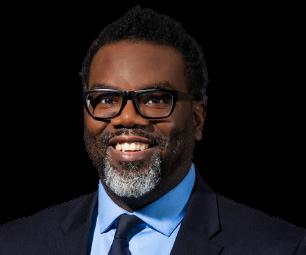
In her concession speech, Lightfoot said she called Johnson and Vallas to congratulate them for advancing to the runoff.
“We were fierce competitors in these last few months,” she said. “But I will be rooting and praying for our next mayor to deliver for the people of this city for years to come.”
The stark ideological contrasts between the two advancers have already drawn national attention. Vallas and Johnson represent a growing divide in the Democratic Party between progressives and conservatives.
Vallas is a former CEO of Chicago Public Schools, who campaigned on a theme of “law and order” and was endorsed by the Chicago’s Fraternal Order of Police. In 2009, Vallas told conservative commentator Jeff Berkowitz that he is “more of a Republican than a Democrat,” despite running as a Democrat in this 2023 race.
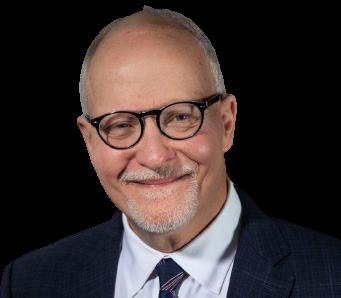
As crime continues to be a top concern for Chicago
See MAYOR, page 9
34% 21% 17% Lightfoot García 14% 10% Wilson Green 2% 2% Buckner King 1% 0% Sawyer
Knudsen, Brian Comer secure top two spots in 43rd Ward race
By Patrick Sloan-Turner Online Managing EditorAld. Timmy Knudsen and Brian Comer will face off in a runoff on April 4 after besting a field of four other candidates in the 43rd Ward Aldermanic election.

Knudsen, who was appointed to the position by Mayor Lori Lightfoot in September, secured 27% of the vote with all precincts reporting, while Comer won 24% at the time of publishing. Election staff still need to tabulate nearly 3,000 mail ballots, according to data revised from a Sun-Times report from Tuesday night.

“It shows me the message of the new generation coming on the city council is working,” Knudsen said. “We're going to keep doing exactly the same thing, and I'm excited for the next month.”
On Tuesday night, the 43rd Ward alderman said that the election results showed that his team’s strategy of connecting with voters face-to-face proved successful.
“You know, we knocked on 13,000 doors,” Knudsen said. “It kind of shows me that our ground game is working.”
Knudsen and Comer finished at the top a ticket of six candidates in the affluent 43rd Ward, which is home to the Chicago neighborhoods of Lincoln Park and the Gold Coast. The duo defeated Wendi Taylor Nations, Rebecca Janowitz, Steve Botsford and Steve McClellan.
Michele Smith, Knudsen’s predecessor who entered retirement early last summer, endorsed Taylor Nations in December. Janowitz reportedly spent $750,000 on her own campaign, the most amount spent on any candidate in the race.
Comer, who received an endorsement from the Chicago Tribune on Feb. 13, went on the offensive against his opponent following Tuesday night’s results.
“My opponent and I could not be more different from each other,” Comer said, addressing supporters at a victory party in Lincoln Park.
The current president of the Sheffield Neighborhood Association and beat facilitator for the 18th Police District later said that ward voters resonated with his message of tangible action, rather than political speech.
“We've talked to everyone about the actionable plans that we want to put forward,” Comer said. “And we're not just talking in the platitudes that typical politicians do.”
As a native of the 43rd Ward, Comer
Timmy Knudsen

43rd Ward Alderman
sold himself as a candidate with close ties to the area and a deep understanding of residents' concerns. On Tuesday night, the candidate noted how special it felt to have a chance to represent the ward in which he was raised.
“As a local kid who grew up in the neighborhood … I know our ward like the back of my hand,” Comer said.
Prior to taking over for Smith on City Council last fall, Knudsen served as chair of the Chicago Zoning Board of Appeals,
while also working as an attorney. According to Knudsen’s campaign site, he provided legal services to over 40 asylum seekers. The alderman became the first openly gay representative of the 43rd Ward when he was sworn in last fall.
Like other Chicago municipal races, the issues in the 43rd Ward election heavily hinge on public safety. Throughout the race, both Knudsen’s and Comer’s messaging have leaned heavily on curbing crime. Comer has touted his relationship with neighborhood police.
Knudsen cites his work to install security cameras throughout the ward in his brief period as alderman, using added technology as a tool to aid police in their goal of reining in surging crimes like car-jackings and robberies.
“We brought in a government technology firm to rethink and do an overhaul of our system,” Knudsen said. “Those cameras are for safety because they put eyes on the beat for the commanders and also, they collect data for organizations like the University of Chicago Crime Lab.”
Over the next month, crime is likely to continue as the issue at the forefront of the 43rd race. Both candidates said they would continue to lean heavily on their ground games that proved effective in the first round of the election, selling their approaches to crime and area fiscal stability.
“We're going to just reconnect with everybody that has been a part of this effort for the last six months,” Comer said. “[We’ll] bring them in closer to help us extend and go deeper into the 43rd Wward.”
Knudsen also said his team’s focus will be knocking on doors between now and April 4.
“My focus will always be reaching more constituents, reaching more voters, having one-on-one conversations to hear what really matters to them,” Knudsen said. “My priority will be finding out how we can bring them results.”
TimmySigns placed outside the Lincoln Park branch of the Chicago Public Library in support of candidates for the mayoral and aldermanic races. Knudsen and Comer are in the 43rd runoff. AMBER STOUTENBOROUGH | THE DEPAULIA
“It shows me the message of the new generation coming on the city council is working. We're going to keep doing exactly the same thing, and I'm excited for the next month.”Timmy Knudsen, current alderman for the 43rd Ward. PHOTO SUBMITTED BY TIMMY KNUDSEN Brian Comer, current president of the Sheffield Neighborhood Association. PHOTO SUBMITTED BY BRIAN COMER
Law students request to add shuttle stop at Union Station
By Kiersten Riedford News Editor
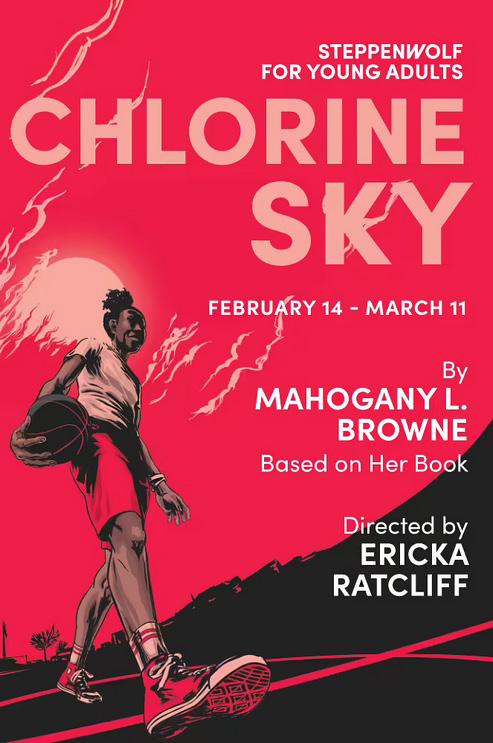
A typical weekday night at the College of Law can look a lot like a kindergarten class being let out at the end of the school day, according to Haley Pennington, the Student Government Association (SGA) senator for the College of Law and second year law student.
Everyone files out of the revolving door and meets with their parents who drive in from the suburbs. Those who live nearby walk home, and some walk to the Union Station to head home.
While the typical kindergarten experience seems light and fuzzy, the reality of this situation is that many students have to stay alert as they walk late at night, clutching onto their pepper spray and safety alarms.
“It sucks because law students have a totally different DePaul experience than most,” said Kellen Brown, the SGA Chief of Staff and
To mitigate student’s safety concerns, Pennington said they are pushing for DePaul to include several new stops, including one at Union Station on the shuttle bus schedule.
“We definitely need a better strategy,” Pennington said. “I think the shuttle is one of those ways to stop that. Because I've actually seen students who are from the suburbs, I've seen their parents drive all the way into the Loop and pick them up, and that is just not necessary when we have a shuttle that could drop you from door to door.”
Russell Dorn, a spokesperson for DePaul, said in a statement, “the administration is prepared to work with representatives from Student Government and with our shuttle vendor to determine the feasibility of extending limited service to the commuter rail stations.”
Brown said he and other members from SGA have met with DePaul’s leadership team to discuss this issue. According to Brown, this meeting took place over a month ago and since
followed up with the leaders on March 1, they told him they are unable to allow the shuttle to stop at Union at this time because of scheduling and budget constraints.

Dorn confirmed this when he told The DePaulia via email that “it is not possible to determine an implementation timeline before determining the feasibility and logistics related to this proposed change in service.”
“We're not done,” Brown said. “We're going to keep pushing it, but I know the university, even if they did approve it, they were going to [make it] like a pilot basis to see how many students actually got off at Union.”
Pennington said that while she is looking forward to there being a pilot program for the shuttle to stop at Union Station, she said that through this whole process there has been “no openness. There's no transparency.”
She said the student body should be made aware about plans like this because they affect the entire student body, even if
survey people in the Loop, not just law students, and see if a stop on the shuttle at Union Station would be something they would want.
He said that if the numbers are high and people show interest, they can take the numbers to the university leaders and get the pilot program to be underway faster than it is being done currently.
“A lot of these things, especially with the shuttle, SGA is doing our best to try to navigate reality in terms of budget constraints and resources and whatever it may be,” Brown said. “I know that for law students, it's terrible to walk late at night from Union Station to the Loop or wherever they're walking to, and that's not an acceptable situation, and that's something that we're going to make sure we address going forward as quickly as the student body possibly can, given the circumstances.”
Pennington said for students who are interested in public safety issues on campus or while commuting, there is going to be a public safety town hall event on March 8 hosted by SGA and the Student Bar Association (SBA). The town hall will take place in DePaul Center Room 8005 at noon. Lunch will be provided.
There will be a panel including David Harris, the commander of the first district of Chicago Police Department; Commander Joe Bird of CPD's Public Transportation Section; Kevin Ryan, the vice president of security for the CTA; Robert Wachowski, the Public Safety Director for DePaul; and Kevin Connolly, the public safety Assistant Director for DePaul.
For those with questions for the panel members, there is a Google Form that they can submit questions to. Students can submit questions even if they are unable to be at the town hall.
Christian group faces backlash from DePaul students after controversial post about LGBTQIA+ “lifestyle”
By Patrick Sloan-Turner Online Managing Editor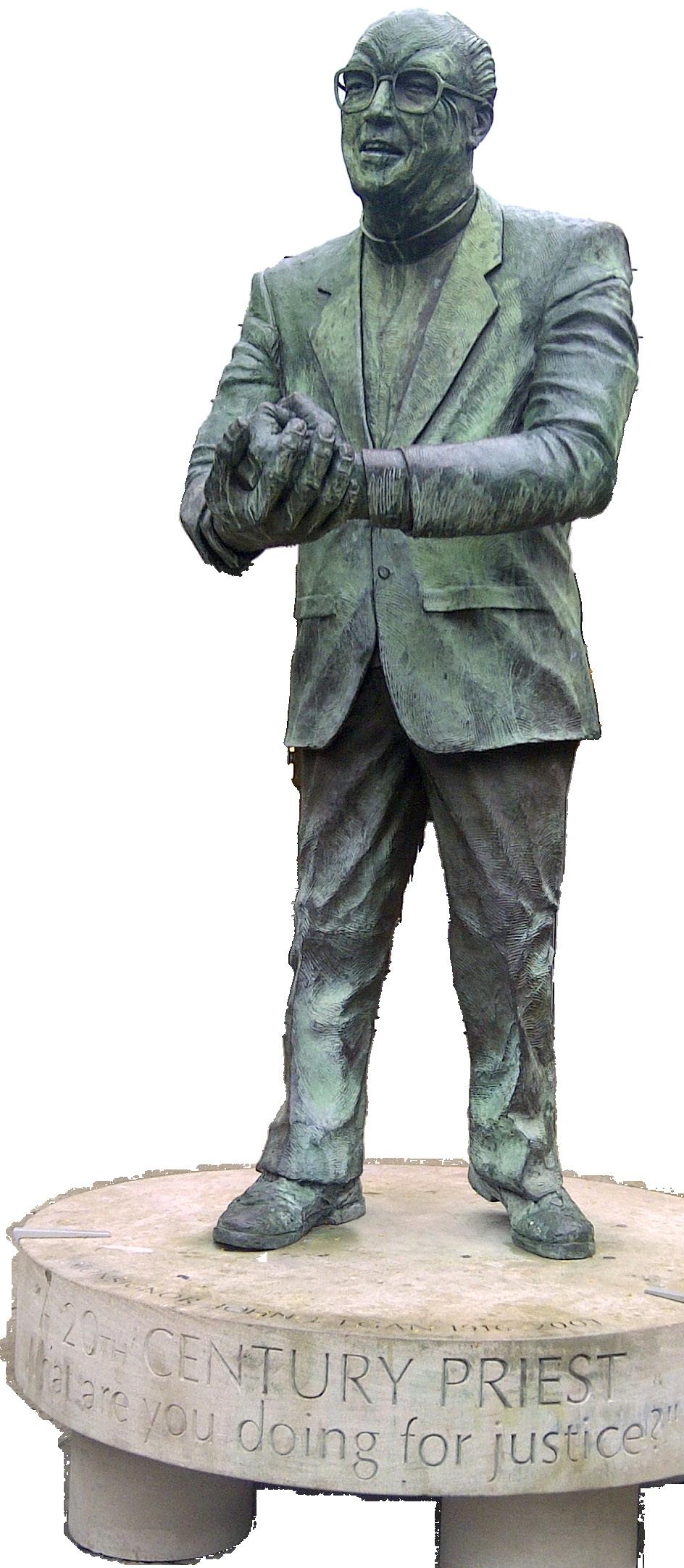
DePaul sophomore Brigid O’Brien was sitting inside local coffeehouse the Bourgeois Pig Cafe Wednesday evening with her roommates, senior Alexandra Murphy and junior Grace Lewandowski, when her attention turned to an instagram post on Murphy's phone.
O’Brien’s eyes widened when she saw the post on screen. It was a post by a group with the username “vessel.oncampus,” which goes by “Vessel,” that included messaging both O’Brien and Murphy categorize as harmful. O’Brien herself identifies as bisexual.
“We were super pissed,” O’Brien said.
Vessel, a Christian group meeting at DePaul, addressed the group’s view on LGBTQ+ “lifestyles.” The post stated as follows:
“We are non-affirming. This means we do not agree that the LGBTQIA+ lifestyle is supported by biblical text. Below are verses which support this.”
The post then cited 1 Corinthians 6:9-11, an excerpt from the Bible that in many versions says, “Neither fornicators, nor idolaters, nor adulterers, nor homosexuals, nor sodomites, nor thieves … will inherit the kingdom of God.”
Involvement (OSI).
In a statement to The DePaulia, university spokesperson Russell Dorn said that the Division of Student Affairs, “celebrates the diversity of student body, faculty and staff, and committed to social justice and service to others.”
The statement also addressed the current situation regarding Vessel.
“Vessel is not a registered student organization and – it is important to note – has not been reserving use of space through the university,” Dorn wrote. “In addition, Vessel has not submitted an application to be recognized as a student organization at DePaul.”
Screenshots of the group’s Instagram in-
Soon after the post began to receive further attention Wednesday night, the Instagram account could no longer be found, the reason for which is unclear. Because of this, minimal information is available regarding the group, which Murphy said she believes has somewhere between 15-20 members.
The DePaulia contacted several members of Vessel in hopes of conducting an interview for this story. The group declined requests for an interview and instead issued the following statement to The DePaulia:
“Recently, our small group Vessel was questioned on our views of sexuality and relationships. In no way did we intend to harm, or seem to ostracize or reject the LGBTQIA+ commu
Recently, our small group Vessel was questioned on our views of sexuality and relationships. In no way did we intend to harm, or seem to ostracize or reject the LGBTQIA+ community at DePaul. In fact, we would much rather focus on worship and community building, key aspects of our faith community.
We have reached out to those who have raised issues with our group (none of these people have attended or attempted to attend a meeting) in order to promote conversation and understanding, but none have followed up on this.
Disagreement is not harassment, but we apologize for any hurt we may have caused in how we have communicated things. As Christ-followers we commit to finding better ways to communicate and peacefully coexist with those who disagree with the tenets of our faith.
We believe all people are deeply loved by our Creator and that’s why our focus is on Jesus. We believe He wants a personal relationship with everyone. Our mission was to provide a space for all to discover what that looks like through worship, community building, and Bible study.
The messaging immediately upset the trio of roommates, who all felt a need to act. Still in the coffee shop, O’Brien and her roommates drafted a Change.org petition with the goal of barring Vessel from meeting on campus. It quickly garnered more support than she anticipated.
“It gained a bunch of traction and then by the end of the night, we had got maybe like 200-something signatures,” O’Brien said. “The next day, it just kept getting shared.”
At the time of publishing, the petition had received 550 signatures, showing O’Brien, Murphy and Lewandowski were not alone in their feelings that the group’s messaging was discriminatory.
Though it is likely many students were unaware of Vessel until last week, Murphy said she has known of the group from its start in October. Previously, Murphy was a member of a non-denominational campus ministry group known as InterVarsity, which meets regularly on campus and is a registered group at DePaul.
According to Murphy, Vessel originated in the fall quarter 2022 after a group of students left InterVarsity. Murphy said these members started this new group because of their non-affirming beliefs, a point of contention as many members of InterVarsity do not see those who identify as LGBTQIA+ the same way that most Vessel’s founding members do.
“I can say concretely that I know that's why,” Murphy said. “[InterVarsity] had a retreat over the summer where two of the head leaders for Vessel had approached me and assumed that I believed the same.”
While Murphy and O’Brien both find the group’s messaging discriminatory, they also call into question two other issues concerning religious groups at DePaul. First, Murphy and O’Brien’s petition cast light onto the fact that Vessel was meeting regularly on campus property, a violation of DePaul policy as Vessel is not registered with the Office of Student
Statement to e DePaulia
dicate it did indeed aspire to become an officially registered group at DePaul, stating “we are not DePaul affiliated,” but “we are looking to become a club soon.”
Secondly, the episode illustrates what Murphy and O’Brien believe is a lax antidiscrimination policy in place at DePaul. In wake of Wednesday’s events and the attention their petition received, the two said they met with Associate Dean of Students, Leslie Watland on Friday. In the meeting, they soon found out DePaul’s discrimination policy does not prohibit the messaging used in the group’s Instagram post.
“Technically speaking, a group at DePaul can be non-affirming to the queer community as long as they don't openly disclose it and [say] like, ‘okay, if you're a certain sexual orientation, you can't meet with our group,’” O’Brien said.
O’Brien and Murphy said the policy does not give any specific guidelines for messaging with campus groups, nor does it state any regulations regarding organization communication that LGBTQ+ individuals might find discriminatory.
“[We’re] both frustrated about the situation, just because I don't think it's made very clear in the antidiscrimination policy,” Murphy said. “You know, it [doesn’t have] to be really bad discrimination and harassment for it to be a problem.”
While she expects DePaul to take action against Vessel as the group violated policy by holding meetings on campus without registering, O’Brien sees Wednesday night’s post as just one example of a group taking advantage of the ambiguity in DePaul’s guidelines.
“It’s kind of a loophole for them to use that language, because they can say they're not affirming,” O’Brien said. “As long as they say they welcome everyone, it doesn't go against anything.”
rassment, but we apologize for any hurt we may have caused in how we have communicated things. As Christ-followers we commit to finding better ways to com municate and peacefully coexist with those who disagree with the tenets of our faith. We believe all people are deeply loved by our Creator and that’s why our focus is on Jesus. We believe He wants a personal re lationship with everyone. Our mission was to provide a space for all to discover what that looks like through worship, community building, and Bible study.”
dox Christian in its statement, did not say whether it plans to continue to meet or reg ister with OSI.
the petition and its accompanying support garners a change in policy regarding the kind of language Vessel used, they cannot help but be disheartened by the use of it. Bible verse, I think to an extent, that is still discrimination,” Murphy said. “Regard less of it being outward harassment necessarily, or being like, ‘you cannot
come to our group,’ it’s discrimination.”
For O’Brien, Vessel’s messaging and the DePaul policy that allows for it is an example of a deeper hypocrisy by religious groups that share this view of those who identify as LGBTQ+.
“I just wonder how you sit there with a good conscience and be like, ‘yes, our love is conditional, but it's okay because that's what God wanted,’” O’Brien said.
The future of student loan debt forgiveness is in SCOTUS’ hands
Sen. Bernie Sanders speaks at a rally for student debt relief outside the Supreme Court in Washington on Tuesday, Feb. 28, as the court hears arguments over the plan.
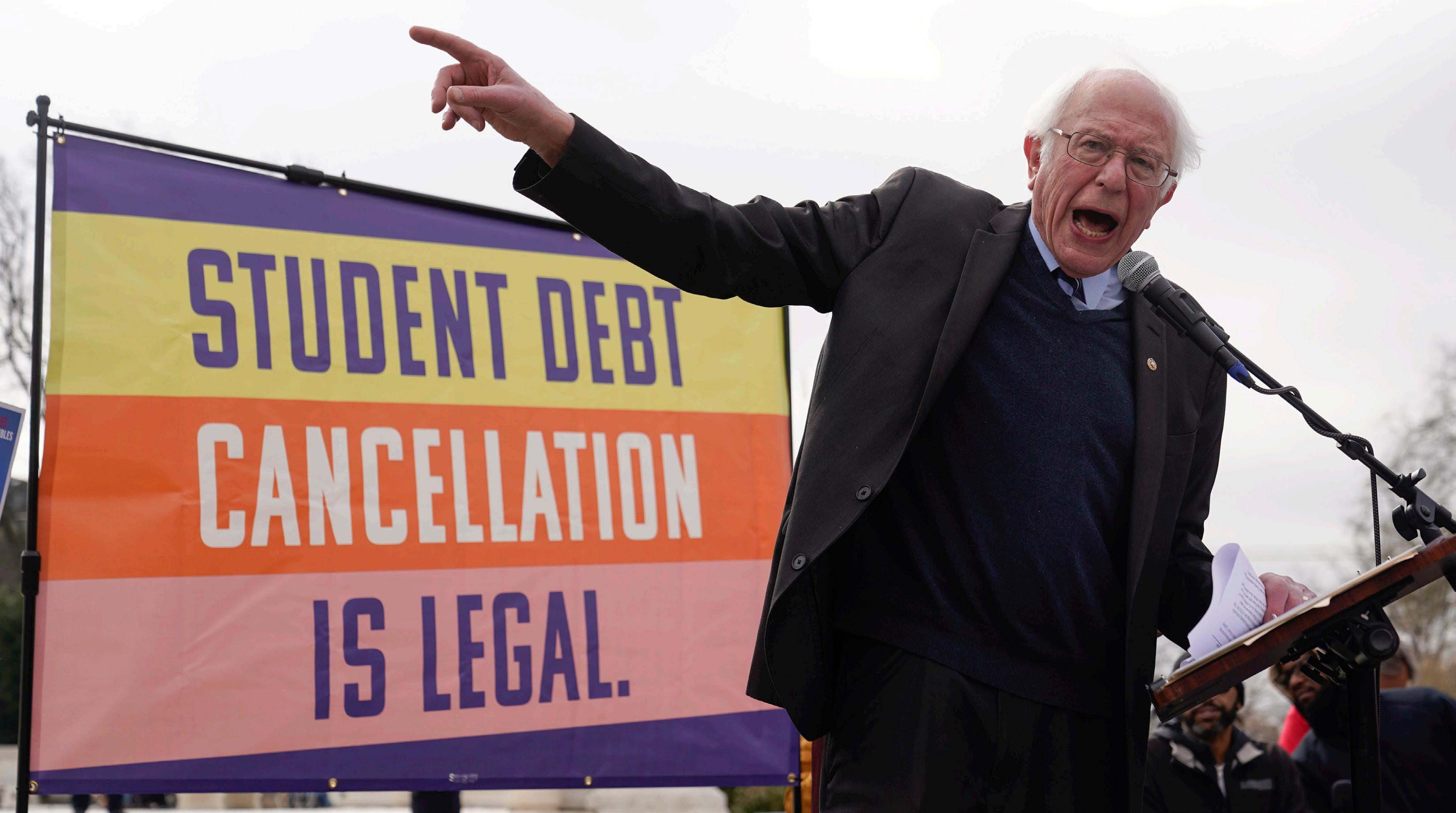 By Rose O’Keeffe Staff Writer
By Rose O’Keeffe Staff Writer
There are over 40 million people with student loan debt in America who owe an average of $29,719 each, according to Emma Kerr and Sarah Wood of the U.S. News and World Report.
Rachel Perales, a sophomore at DePaul studying criminology in the BA/JD law program, worries about student loans and views Biden’s plan as a welcome reprieve.
“My college years are not only spent focusing on my studies but also trying to pull off a full-time job to cover some of the cost,” she said.
As a first-generation college student, Perales said that student loans are inevitable.
“I don't come from the privilege of being able to know that my parents are there to financially support me,” she said.
Perales values that the Biden administration is seeking solutions to this problem that affects a large number of DePaul students, and college students throughout the country.
Susan Burgess, DePaul political science professor said that forgiving student loans would demonstrate that the federal government wants to foster and protect higher education.
“The cost of higher education has shifted onto students' relief loans,” Burgess said “Biden is trying to address that and recreate the balance that once existed.”
Nearly half of a trillion dollars were at stake on Tuesday, Feb. 28 when the Supreme Court heard arguments for more than three hours from two cases, each challenging the legality of Biden’s student loan debt relief bill.
Justice Neil Gorsuch questioned the fairness of the loan forgiveness plan.
“I think the argument that is missing is the cost to other persons in terms of fairness,” Gorsuch said. “For example, people who have paid their loans … and people who are not eligible for loans in the first place.”
Grace Provan, a DePaulsecondary education major,who qualifies for $20,000 in loan forgiveness, challenged the frame through which the fairness of this bill is scrutinized.
“I think when people are saying fairness, they have to consider the financial context in which fairness exists,” she said. “It's not about equality. It's about equity. How can everyone help each other?”
The plaintiffs in both cases claimed that the sweeping debt relief bill extends beyond the president and the Department of Education’s powers and requires input from Congress.
Biden v. Nebraska, filed by the attorneys general of Nebraska, Missouri, Arkansas, Iowa, Kansas and South Carolina, specifically argued that states would suffer negative financial consequences if student debts were not paid.
The second case, Department of Education v. Brown, was filed by two students from Texas who do not qualify for debt forgiveness and believe the Department of Education should have asked for broader input about the plan, according to Leo Aquino of Business Insider.
On Tuesday, conservative justices seemed to find merit in the call for Congress to be the legislative body to pass the debt relief bill that would impact over 40 million Americans.
U.S. Solicitor General Elizabeth Prelogar disputed this during the hearing by citing the 2003 Higher Education Relief Opportunities for Students Act (HEROS) that allows the president and Department of Education to dismiss federal student loan debt amid a national emergency, such as the Covid-19 pandemic.
Dr. Robert Kallen, visiting professor of economics at DePaul, said that Biden’s plan pushes the limits of executive power.
“I won't say it's total overreach, but I think there's a huge problem and what you're seeing is a failure of Congress to address it,” Kallen said.
He believes a lack of cooperation between the executive and legislative branches prompted Biden and the Department of Education to forgo a congressional approach and rely on the HEROS act to pass the debt relief bill.
Dr. Scott Hibbard, chair of DePaul’s political science department, said that the idea of debt forgiveness for student loans is within the executive branch’s authority, but the scale of the decision warrants checks and balances.
“The extremely large amount of money involved raises legitimate questions about whether or not it triggers the major questions doctrine,” Hibbard said.
The major questions doctrine refers to the need for Congress to authorize decisions with broad economic and national significance.
“In a perfect world, President Biden would have gone to Congress for authorization, but given the acrimonious nature of American politics at this moment, that would have never happened,” Hibbard said.
Provan believes that Congress needs to play a larger role in regulating the cost of college.
“When education is costing more than
what a person makes in a year, then education costs too much, especially when a lot of jobs require a B.A. or even a masters,” Provan said.
On Tuesday, the Supreme Court addressed the question of congressional approval, but also examined whether the cases against the bill have legal merit.
Though Kallen believes debt relief could be a questionable extension of executive power, he does not believe the states filing the lawsuit have legal standing, meaning the plaintiffs lack a legitimate argument in their case.
“Normally with standing, you have to have injury,” Kallen said. “Are the states really the ones who are suffering the injury? The answer is no. It's the individuals that are suffering the injury or the benefit of this program.”
He said that if anyone has legal standing, it is the plaintiffs in Department of Education v. Brown, because they bring a case for individual suffering due to unforgiven loan debt under this legislation.
Since the outset of the pandemic, there has been a freeze on student debt payments because the Trump and Biden administrations employed the 2003 HEROS act. This means that borrowers have had a reprieve from student loan payments for nearly three years.
Biden’s three-part plan aims to continue this trajectory.
The plan, first proposed in August 2022, promises to relieve up to $20,000 of debt for Pell Grant recipients and up to $10,000 of debt for non-Pell recipients who earn less than $125,000 annually. It also proposes to reduce monthly loan payments by 50% for undergraduate borrowers and monitor increases in college tuition.
Hibbard said that in the early 1980s, higher education was promoted as a way to win the Cold War and was therefore largely federally subsidized. In the late ‘80s and early ‘90s, though, he said conservative politicians promoted privatizing college costs, which has led to an explosion of student debt.
Both Perales and Provan, who are Pell Grant recipients that qualify for maximum debt forgiveness, believe that higher education is becoming more and more necessary, and as a result, costs must be more realistic.
“We're told to go to college and get a degree and we'll be fine,” said Perales. “But now, even college-level jobs aren't able to pay off all the debt.”
Provan questioned the broader economic scope of student loans as she prepares to begin professional life.
“How do you ever get done with this [stu-
dent loans]? ”Provan said. “How can I, as a person that's about to go out into the world, start replenishing the economy? How can I pay for groceries? How can I afford an apartment or a house?”
Kallen pointed to the economic benefits of relieving student debt.
“This increases people's disposable income and takes away a little bit of the debt load,” Kallen said. “It becomes what I would refer to as an economic multiplier.”
He explained that for borrowers it is not just a matter of paying off debt. Giving people more breathing room financially allows them to invest in other expenses that can boost the economy.
“The economic impact for an entire generation will be huge,” said Hibbard. “It will allow them to buy homes, start families and get on with life on a sound economic footing, which will have significant implications for the broader economy.”
16 million Americans have already been approved for debt forgiveness, now it is up to the Supreme Court to uphold its legality.
Kallen predicted the Court’s decision will be released in mid-June, saying that high-profile cases such as this are often pushed to the beginning of summer.
Burgess believes a conservative decision to deny this bill would further alienate the Supreme Court from dissatisfied Americans.
“If the Supreme Court decides to use its power to block or to allow states to block this initiative, that's going to further anger a significant part of the country,” Burgess said.
Both Kallen and Provan are not optimistic that the Supreme Court will pass student loan debt relief and are discouraged about the gridlock affecting America’s very partisan political system.
Nevertheless, they encouraged everyone to vote to impact politics in the future.
“There's not anything we can do about the Supreme Court, but we can at least get our voices heard with politicians in Congress,” said Provan. “We’ve seen the change we can make.”
DePaul’s tuition for the 2023 school year is $42,840, not including housing and additional fees, usually costing around $20,000. 98% of incoming freshmen receive some scholarship, but most students still accumulate close to the national average of about $28,000 each year.
DePaul’s Inside-Out program looks to offer certificate programs in the near future
By Samantha Moilanen Asst. News EditorIn 2004, 38-year-old Tony Pizarro was wrongfully incarcerated at Stateville Correctional Center in Illinois for a crime he did not commit.
During his time at Stateville, Pizarro enrolled in college courses to eventually earn a masters degree in Christian ministry and restorative arts at North Park University.
While earning his degree, Pizarro took part in the national Inside-Out Prison Exchange program started by Temple University.
The Executive Director of the Steans Center Howard Rosing, along with Jacqueline Lazú, associate dean for the College of Liberal Arts and Social Sciences,, brought the Inside-Out program to DePaul in 2012.
Inside-Out brings students from DePaul’s campus inside to two Illinois prisons to collectively learn in one classroom.
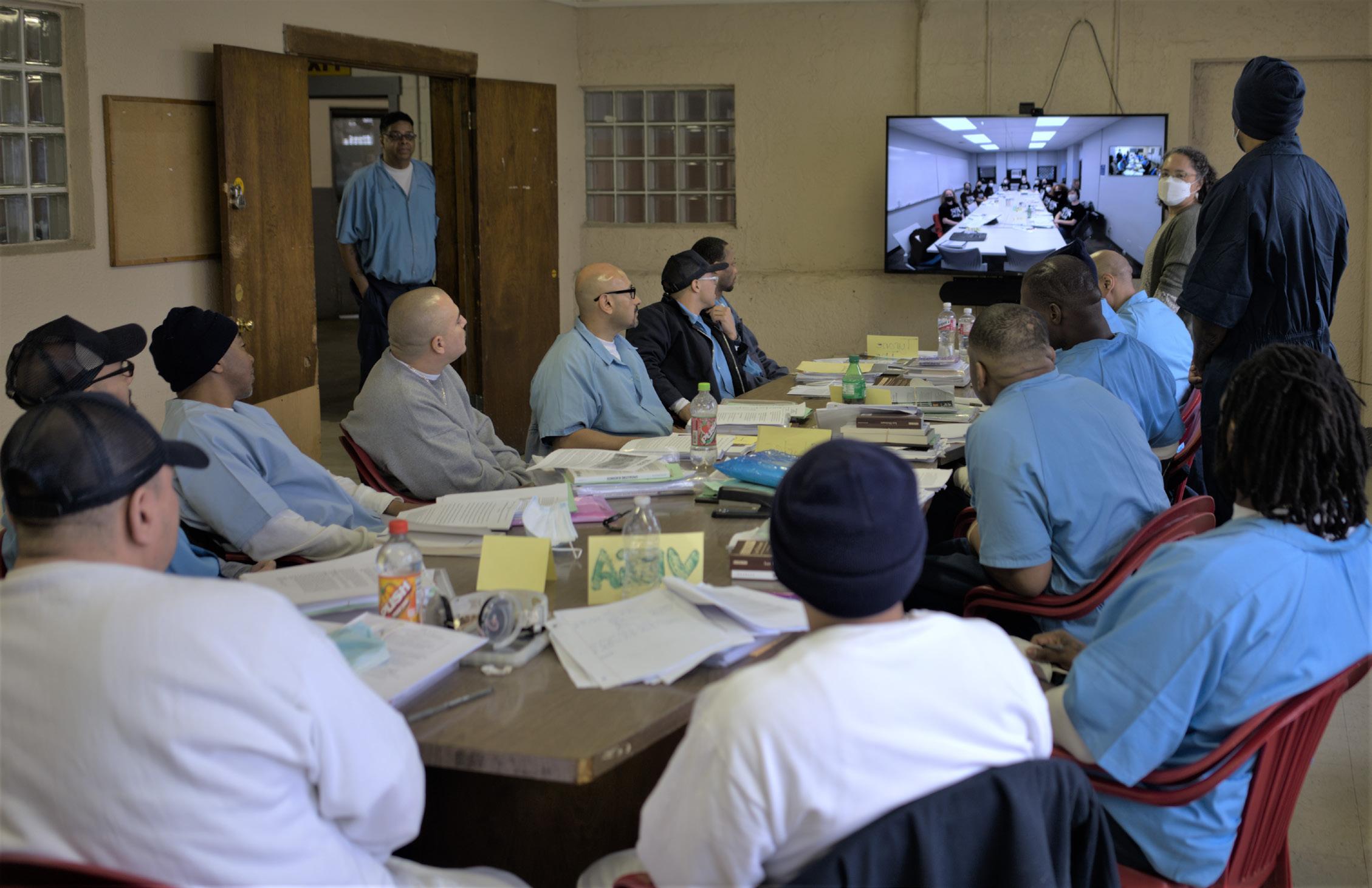
Pizarro was one of the inside students who took a class on masculinity, law and justice at DePaul during his time at Stateville.
“There were approximately 12 outside students of diverse backgrounds,” Pizarro said. “And what was interesting [was that] some of the outside students shared stuff within that class and that space, that they explained they never shared outside in [a] classroom space, or with some of their closest friends.”
Rosing said one of the goals of the program is to break down prejudiced misconceptions surrounding incarcerated individuals by bringing students from inside and outside prison walls together in a collective learning environment.
“There's power differences when you're incarcerated versus non-incarcerated,” he said. “But in the classroom, you're treated as students. That’s it.”
According to Rosing, the program brings DePaul students to Stateville or Cook County once a week to study together as peers and, most importantly, as equals.
“The students from campus are supporting the inside students [through] learning and solidarity,” he said. “The students who are incarcerated are doing the same, but also helping those students from the outside begin to understand the realities of incarceration, and putting faces, personalities, skills and talents of incarcerated students in their
view [to understand] that they're human, that they're real people.”
Pizarro said he believes the collaborative nature of Inside-Out courses was fundamental in bridging any gaps between inside and outside students caused by preconceived biases about incarcerated individuals.
“The outside students normally come in with a perspective that, you know, they may be ahead of the curve and come to realize that they actually have to work a little bit harder because like … the inside students actually do the work,” he said. “So it allows them to now come into a space where they can actually learn and collaborate with others.”
Christina Rivers, an associate professor of political science at DePaul, teaches a class at Stateville for the Inside-Out program. She said DePaul currently offers classes at both Stateville and Cook County Jail. However, when DePaul started offering a class at Stateville around 2017, Rivers said DePaul was the first university to offer any courses there in about 25 years. Before 2017, classes were only offered at Cook County.
DePaul does not currently offer degree programs for incarcerated students, but only
credit for courses taken through Inside-Out that can be transferred to other universities that offer degree programs, according to Rivers.
She said this is largely because of funding as inside students are not required to pay for courses taken through Inside-Out at DePaul.
“All the instruction there is pretty much donated, and around 2016, we started offering the course credit, and it’s also for free,” she said. “We provide everybody with books, [and] they don't pay any tuition.”
However, Rivers said inside students still get a transcript for courses taken through DePaul.
Rosing said they are currently working on getting certificate programs for incarcerated students taking courses through DePaul. However, he said it has been a slow process to ensure that it will be sustainable with the current funding.
According to Rivers, establishing a certificate program for inside students is the current priority because it will offer students a way to quickly obtain specialized knowledge in a certain area for transferable credit.
“They're becoming more prevalent, and in universities, because they're quick, espe-
cially if [you’re] a midlife learner [and don’t have] time to go to [school for] four years, or don't have [the] money,” she said. “It serves that audience.”
According to NPR, out of the 40 prison facilities in Illinois, six offer post-secondary education toward a bachelor’s degree or higher. NPR reports some institutions are now offering graduate degrees for incarcerated individuals.
Stateville has the most post-secondary education programs with courses offered through North Park, Northwestern, Northeastern and DePaul, according to its website.
Rosing hopes DePaul will eventually offer degree programs in the future.
“At some point, maybe there will be a bachelor's degree,” Rosing said. “Other institutions have already gone there.”
Fall semester was the first time Inside-Out was offered in-person once again for on-campus students since the pandemic.
Pizarro said the Inside-Out program allowed him to build lasting connections with people he still speaks to today.
“You find something in prison that you can’t find free,” he said.
DePaul Public Safety aims to protect students, campus
By Olivia Zimmerman Staff WriterDePaul is the largest catholic university in the U.S. and had a 2021 enrollment of over 21,000 students spread over two campuses. While the university opened in 1898, DePaul’s Security Department was officially established in 1975, said Robert Wachowski, DePaul’s director of Public Safety.
DePaul’s 75 full-time officers, however, are unarmed. Loyola University Chicago, which had a 2021 enrollment of under 12,000 students, has both a campus security and armed police force.. University of Chicago has an even smaller student body of less than 8,000. However, University of Chicago’s campus security has 100 armed officers.
While other universities have a police force with largely the same duties as city police, DePaul’s officers act as liaisons for the university.
“The responsibilities of Public Safety officers differ from Chicago Police in a number of ways,” Wachowski said.
“Chicago sworn police officers have a broad responsibility, including managing crime on all of Chicago’s streets.”
Among the goals of DePaul Public Safety officers are the protection of life and property on campus, prevention of crime on campus, preservation of the peace on campus, enforcement of all laws and ordinances on campus, and educating the DePaul community on being safety conscious,” Wachowski said.
Some students feel unsafe, particularly on the Loop campus, as students and faculty frequently receive notifications about public safety issues in that area.
“I definitely don’t feel as safe traveling to the Loop [campus] by myself,” said freshman psychology student Simi Singh. “I am not a fan of public transportation and the red line in general.”
“The presence of Public Safety officers on campus both makes some students feel more assured, as well as acts as a deterrent to crime,” Wachowski said. “They also patrol campus on foot, bike and in vehicles. Research shows that having uniformed officers visible is a de-
terrent to crime.”
Seeing officers, even unarmed, around campus helps some students feel safer on campus.
“I do feel safer just because I always [see] them around and just because [Lincoln Park] campus is smaller and more enclosed,” Singh said. “I know we’re an open campus for sure, but I think in terms [of] public safety and the staff here, I do feel pretty safe.”
One service that the Public Safety department has is an escort line to help students get back home at night safely.
“Public Safety officers are available 24/7 on both campuses and are conduits to local police, fire, hospitals and support networks,” Wachowski said. “They also provide escort service on the Lincoln Park campus from 6 p.m. to 6 a.m.”
Having an unarmed security escort service makes students, such as Singh, feel safer, but that may not be the case if they were to be armed.
“I don’t know how I would feel about [armed officers] just because I know I do take the escort line pretty often, [so] I don’t know how I would feel [about] be-
ing in a car with someone armed,” Singh said. “I think [municipal] police and Public Safety should be separate.”
However, in a country where gun violence and mass shootings are all too common, and particularly after a deadly shooting at Michigan State University last month, some students feel having armed officers could help prevent an event from happening at DePaul.
“I think I would prefer [Public Safety officers] to be armed,” freshman Kyla Prater said. “I don’t necessarily feel unsafe, [but] Chicago is still a pretty dangerous place. I would rather them [be armed]. If they were armed, [in the event of] a serious incident on campus they could actually respond in an actual manner.”
Students who wish to contact Public Safety officers may do so by calling 773-325-7777 for Lincoln Park campus incidents, or 312-362-8400 for the Loop campus. Lincoln Park students who need escort services can call 773-325-7233 from 6 p.m. to 6 a.m.
College of Education Dean speaks on building trust at SGA meeting
By Claire Tweedie SGA Beat WriterContinuing the series of guest visits by administration at the Student Government Association (SGA) general body meetings after President Rob L. Manuel and Chief of Staff Arbin Smith, College of Education (COE) Dean Mojdeh Bayat, who took on the role after the previous dean stepped down on Dec. 31, made her appearance on March 3.
During her Q&A format with the general body, Bayat’s answers revolved around breaking the barriers between students and administration through transparency on the role as a dean.
“I’ve always been a faculty member but now that I’m in a different position, I have different relationships that I need to cultivate,” Bayat said at the meeting. “Building those connections, it's all about trust and that takes a lot of time and responsibilities.”
SGA President senior Kevin Holechko is a secondary education major in COE and said although the previous college’s dean, Paul Zionts worked to build connections with students, Bayat has taken it a step further.
Along with an open door policy on Tuesdays from noon to 1 p.m., Bayat also has an open email policy. She encourages students to connect with her and said it is as important for her to know the students as it is for the students to know her.
“[Bayat] has worked really hard to break down this scary barrier of the dean’s office being the place you only go to when you’re in trouble or when you’re in crisis,” Holechko said. “It's now a more welcoming place where you can go and not only voice your concerns but simply have a nice time and interact with them on a personal level.”
Ana Delgado, senator for the College of Science and Health and senior, believes even though Bayat is not her dean, it was good to see other deans in the DePaul community passionate about the colleges they oversee.
“Before I had the opportunity to meet with my dean through SGA, I didn't really have a perception about them,” Delgado said. “I didn't
have a positive or negative impression, they were just the dean. After getting to talk to my own college’s dean and the deans of other colleges like Bayat, I feel a lot more involved and informed about what's actually going on.”
When asked about advice Bayat could offer the students, Bayat said to be brave. Delgado believes Bayat’s answer reflects a lesson she has learned in SGA through acts of support from other people, like students and administration working together.
“Be bold, be brave,” Bayat said. “Maybe it's not good advice if some of you become politicians, but having a healthy appreciation of politics is good. Be bold to stand against politics and be brave for yourself. Don’t let politics stop you from doing the right thing.”
Delgado said she felt more connected to COE and that even if it is not her college, Bayat’s enthusiasm helped her understand the dean’s role in various colleges and DePaul as a whole.
“Since I’m not a student, I don't know what you might misunderstand about my role,” Bayat said. “The job of the dean as a leader is very different from that as a leader at any organization, nonprofit, or other part of the school. The faculty and dean share a lot of power, so we're more there to support the faculty.”
Looking to the spring quarter, Provost Salma Ghanem, Vice President for Mission and Ministry Reverend Guillermo Campuzano and College of Liberal Arts and Social Sciences Dean Guillermo Vásquez de Velasco will also visit SGA.
“In trying to build a better community at DePaul, these meetings are great at building passion through action,” Delgado said. “From an educational and administrative point, they are successful at trying to break down those barriers to help students understand what deans do. In general, these meetings are serving multiple purposes but they are all connected by trying to help students build that bridge between themselves and administrators at DePaul.”
Committee updates Faculty Council on anticipated budget gap: ‘losing sleep’ to avoid impacting faculty, staff
By Patrick Sloan-Turner Online Managing EditorAt almost every Faculty Council meeting this academic year, one topic has dominated discussion more than any other: DePaul’s budget.
Due to declining enrollment, cashflow obstacles caused by the pandemic, increased inflation and more, institutions of higher education throughout the U.S. face escalating budgetary strain and DePaul is no different.
At Wednesday’s Faculty Council meeting, members of a committee tasked with balancing the university’s budget for next academic year updated concerned council members on the plan to curb DePaul’s budget gap.
Faculty Council President Sonia Soltero and council member Tom Mondschean are members of the Strategic Resource Allocation Committee (SRAC), a group that DePaul President Robert Manuel tasked with creating a plan to cut costs to mend DePaul’s financial strain.
“We have been working in groups in SRAC to figure out what to do,” Monschean said, referring to the committee’s deliberations regarding how much they will recommend be cut from particular
areas. “It’s been divided into three areas: faculty expenses, staff expenses and departmental expenses.”
A budget gap refers to the difference between revenue and the costs of running the university. These costs include things like faculty and staff salaries, regular maintenance, travel expenses and more. As of now, it is unclear just how substantial the budget gap will be for the next school year, but Soltero and Mondschean said it is sizable.
The budget for the current academic year demanded much of SRAC’s attention in the fall, and Soltero said that SRAC is now working on a tight deadline to figure out the gap for next school year because of it.
“We are in a time crunch of sorts, plus, the amount of the budget gap is pretty sizable,” Soltero said. “So, we're really trying to look at… cost savings that don't impact people.”
SRAC is working on putting together recommendations for where certain colleges should make cuts, but do not want to do so without discourse with those directly affected.
“We would like faculty to be at the table and be part of the process to identify where these budget reductions will occur,” Mondschean said.
At January’s Faculty Council meeting, DePaul Provost Salma Ghanem told those in attendance that the budget is affecting her office and administration in a major way, too. Financial anxiety has demanded ongoing evaluation of hiring and long-term contract requests for current faculty members.

In a letter to faculty from Manuel in December said that cost-cutting would be coming but wrote “we will focus on being as protective as possible of salary adjustments, securing positions around the university and maintaining the academic quality DePaul is known for delivering.”
Some faculty members in attendance at Wednesday’s meeting expressed frustration with the ongoing budget issues that DePaul has dealt with in recent years. One member asked why DePaul seems to continue to be “behind the 8-ball,” to which Mondschean and Soltero explained that enrollment decline and the pandemic are major factors, but still, only one piece of the pie.
Between 2020 and 2022, U.S. colleges and universities experienced a more than 9% decrease in undergraduate enrollment, equating to a decrease of nearly 1.4 million students, according to a National Student Clearinghouse Research Center
report. At DePaul, a decline in graduate students is a major culprit in the impending budget gap, as far fewer graduate students are enrolled and paying tuition than in years past.
“It didn’t help that 800 graduate students did not come to the college last year like we thought they would,” Mondschean said Wednesday.
With budgetary headaches also comes anxiety from faculty and staff concerning job security, along with worry concerning the quality of education and resources on campus. Though SRAC is tasked with an uphill battle, Soltero said the committee’s primary goal is to mend the situation without hurting the DePaul community, which has not been easy.
“We're trying to as much as possible, reduce impact on those major things [like] people potentially losing their job or having more work with less, and student academic experience and student support,” Soltero said. “We are working super hard and many of us are losing sleep, because these [things] are very serious.”
voters, Vallas’ messaging as a toughon-crime candidate resonated with the city’s voters. He finished in first place on Tuesday with nearly 34% of the total vote, according to data from the Associated Press. Vallas dominated the 43rd Ward, which includes Lincoln Park, where he got 57% of the ward’s vote.
Vallas called for adding hundreds of police officers to patrol Chicago and was highly critical of Lightfoot’s handling of crime during her tenure. He reiterated his desire to curb crime during his victory speech.
“We will have a safe Chicago,” Vallas said. “We will make Chicago the safest city in America.”
Johnson, a Cook County Commissioner and former CPS teacher, is the antithesis of Vallas within the Democratic Party.
Finishing in second place with just over 20% of the total vote, Johnson represents the progressive wing of the party. He was endorsed by United Working Families and is prioritizing investment in education, job placement for underserved youth and raising taxes on the city’s wealthy and corporations.
He also received over $1 million in donations from the Chicago Teachers Union.
“Tonight is about building a Chicago that truly invests in our people,” Johnson said during his victory speech Tuesday.
Johnson was critical of Vallas in his speech, calling out his opponent’s policing platform and conservative past.
“Paul Vallas is someone who is supported by the Jan. 6 insurrectionists,” Johnson said. “He switched parties when Barack Obama became president of the United States … He said that he fundamentally opposes abortion … Chicago, we cannot have this man as the mayor of the city.”
The rift between Vallas and Johnson on issues like policing and public safety highlights the same divide in the Democratic Party that played out on a national stage during the 2016 and 2020 elections.
Many believe that Democrats around the country will be paying close attention to Chicago’s mayoral race due to its potential impact on the future of the party.
“I've already had inquiries from maybe half a dozen national publications that are tracking the mayor's race and are attempting to understand what the meaning of the race is for both the Democratic Party and national politics,” said Dick Simpson, political science professor at the University of Illinois Chicago and former 44th Ward Alderman. “It does show a significant [divide], not only in Democratic politics, but the polarization of politics more generally.”
Conservatives, too, will be watching, as a win for Vallas could imply a right-leaning shift in cities concerned about public safety, which Republicans can potentially use to win back urban voters.
Chicagoans expect a polarized race heading into April.
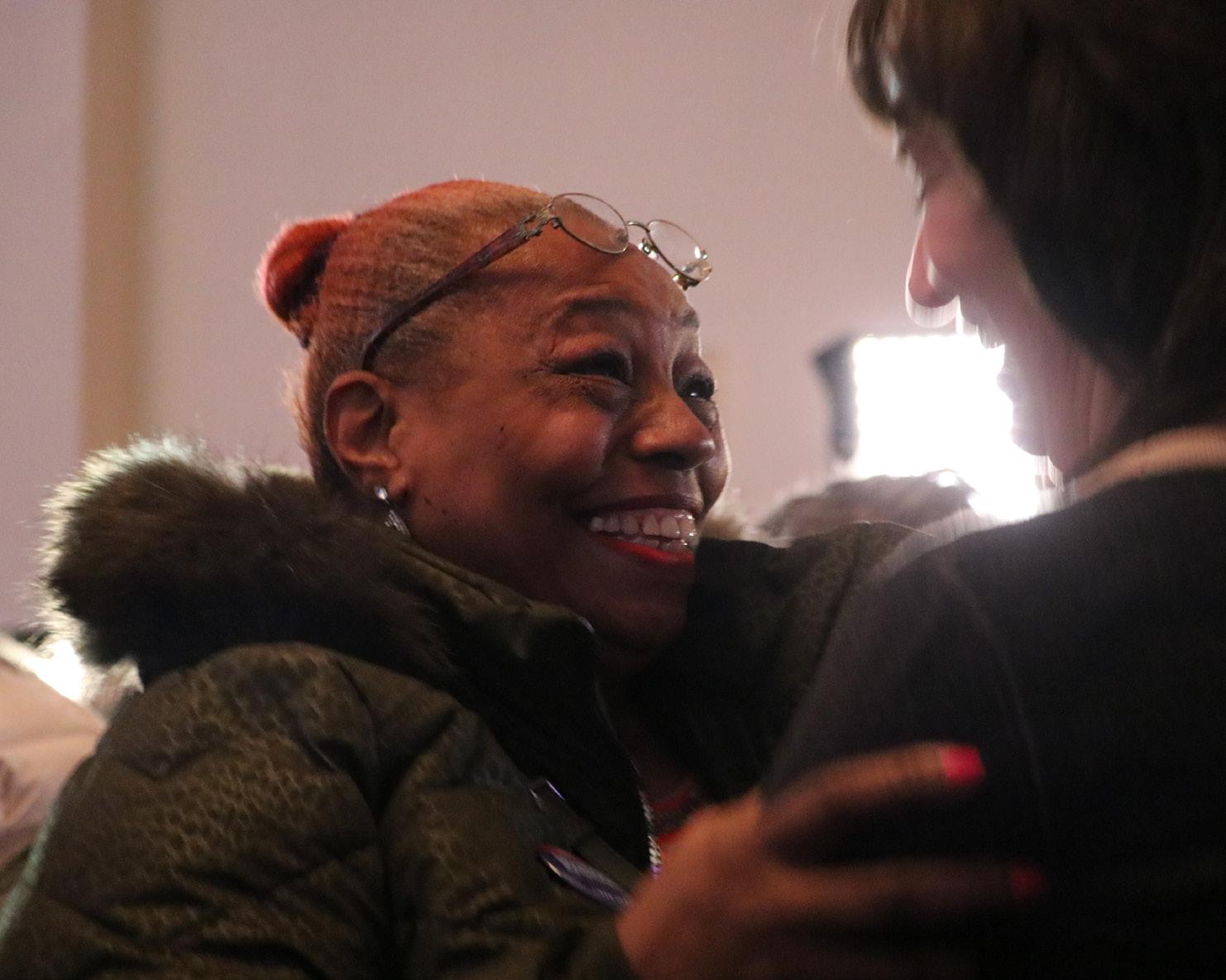
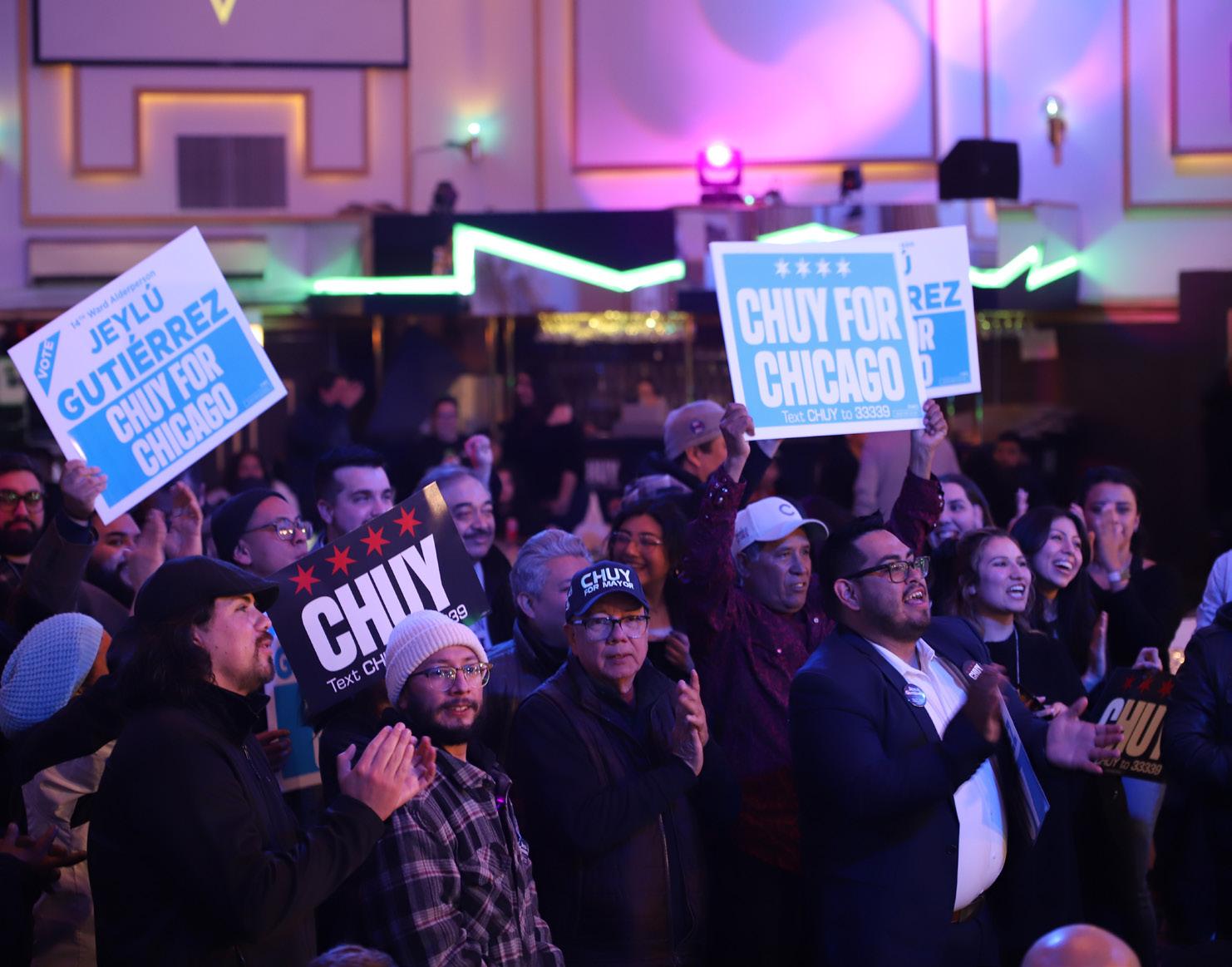
“I think it’s going to be a lot more tense because of how polar opposite the candidates are,” said Lexie Wheeler, graduate student at University of Illinois at Chicago who attended Jesús “Chuy” García’s election party Tuesday.
Wheeler voted for Garcia, who finished in fourth place behind Lightfoot after once being considered the front runner. After Garcia conceded, Wheeler said that she would support Johnson but believes that the city’s progressive youth will have to play an important role in Johnson’s organizing efforts to compete with Vallas.
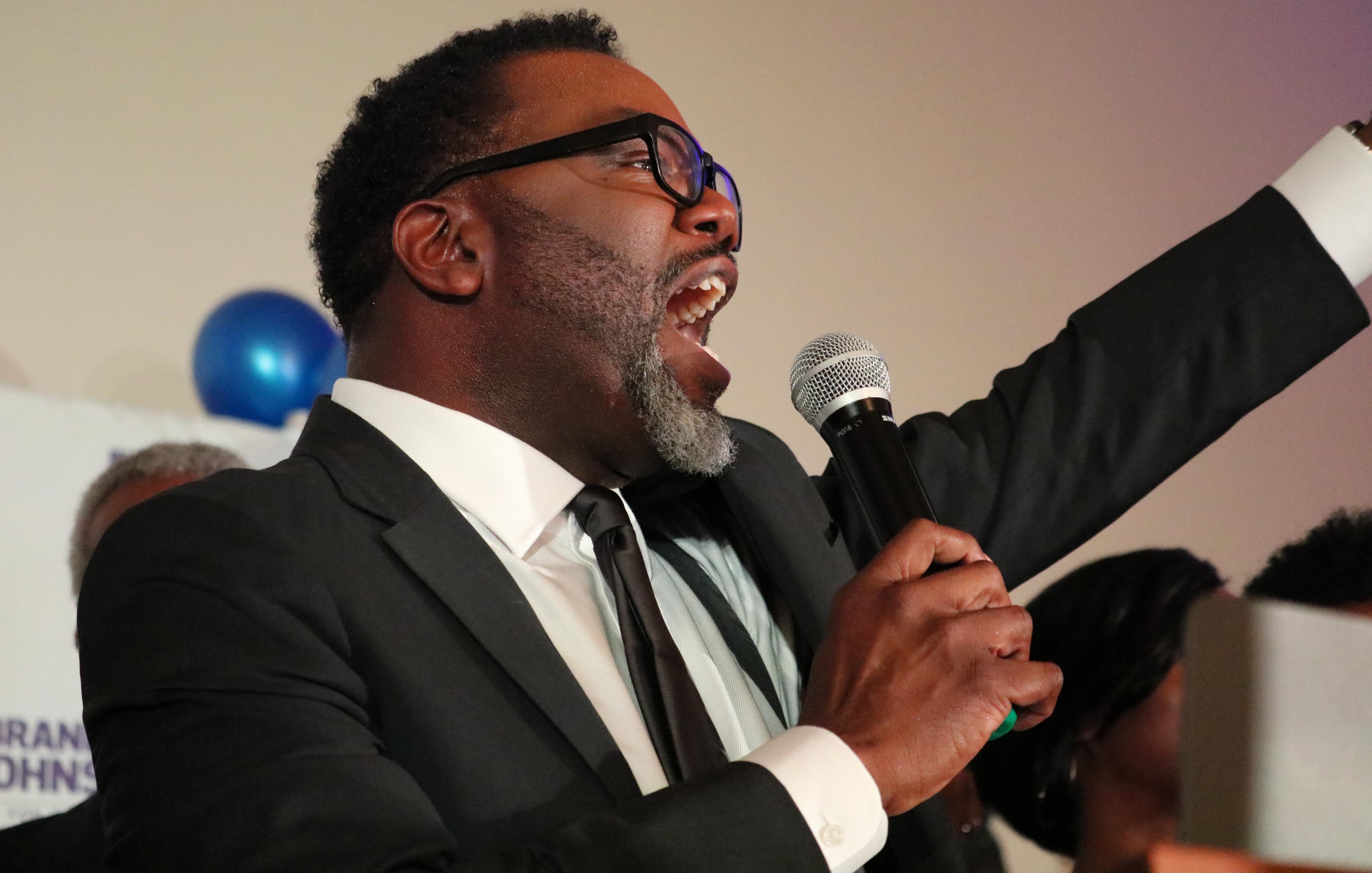
“We are going to rely really heavily on younger voters to make up for the fact that folks in the older demographic are really the ones voting for Paul Vallas,” Wheeler said. “It’s going to be a really big effort to engage the millennial and Gen Z populations.”
It will be a tall task. The city’s youngest voters, ages 18 to 24, accounted for just 3.14% of the citywide vote, according to the Chicago Board of Elections.
Over 160,000 Vote By Mail ballots have been returned to the board, with thousands still outstanding to be counted through the March 14 deadline.
Nation & World
Half of California freed from drought thanks to rain, snow
By John Antczak Associated PressLOS ANGELES (AP) — Tremendous rains and snowfall since late last year have freed half of California from drought, but low groundwater levels remain a persistent problem, U.S. Drought Monitor data showed Thursday.
The latest survey found that moderate or severe drought covers about 49% of the state, nearly 17% of the state is free of drought or a condition described as abnormally dry. The remainder is still abnormally dry.
“Clearly the amount of water that’s fallen this year has greatly alleviated the drought,” said Daniel Swain, a climate scientist at the University of California, Los Angeles. “It has not ended the drought completely but we’re in a very different place than we were a year ago.”
California’s latest drought began in 2020 and no relief appeared in sight heading into this winter.
Three months ago virtually all of California was in drought, including at extreme and exceptional levels.
Water agencies serving millions of people, agriculture and industry were told to expect only a fraction of requested allocations.
The turnabout began with a series of atmospheric rivers that pounded the state from late December through mid-January, building a huge Sierra Nevada snowpack, causing flooding, toppling trees and
smashing the coast with extreme surf.
Water authorities began boosting allocations and, after a few largely dry weeks, powerful storms with arctic air returned in February, creating epic vistas of white-capped mountains while shutting down highways and ski resorts and burying communities in enough snow to collapse roofs.
The monitor shows three regions have received the most benefit from copious precipitation, including snowfall measured in feet rather than inches.
The central Sierra and foothills are now free of drought or abnormal dryness for the first time since January 2020, the monitor said.
The central coast from Monterey Bay to Los Angeles County is also now drought-free, along with two counties on the far north coast.
“The rain has improved California soil moisture and streamflow levels, while the snow has increased mountain snowpack
to much above-normal levels,” the monitor said. “Most California reservoirs have refilled with water levels near or above average, but groundwater levels remain low and may take months to recover.”

As of Thursday, the water content of the Sierra snowpack, which provides about a third of California’s water, was 170% of the historical average on April 1, when it is normally at its peak, according to the state Department of Water Resources.
Department officials plan to conduct a Sierra snow measurement on Friday and hold a briefing on how the remaining month of California’s traditional snow season will impact the state’s water supplies.
Swain said the snowpack could become the largest ever observed in parts of California.
The outlook calls for a continuing wet pattern, particularly for northern parts of the state, and more feet of snow, he said.
“If we can get through the rest of the
season without anymore roof collapses or snowmelt floods it will be quite a boon,” Swain said.
The snowpack potentially could face threats such as early heatwaves or, as some forecast models have hinted, a warm atmospheric river that could cause melting and flooding.
Swain said California is expected to remain cold and the likelihood of the atmospheric river is very low.
“I think that snowpack is going to take well through the summer to melt and ... some shaded patches might still be there next autumn,” he said.
While reservoirs have been filling from shockingly low levels, recovery has not been uniform as demonstrated by the state’s two largest water storage facilities.
Lake Oroville, 65 miles (105 kilometers) north of Sacramento, is at 73% of capacity, 116% of average to date. Another 90 miles (145 kilometers) north, Lake Shasta is only 60% full, 84% of average to date.
Swain said he expects Shasta to get good inflows during snowmelt season because the snowpack there is slightly above average although not exceptional.
The U.S. Drought Monitor is a joint project of the National Drought Mitigation Center at the University of Nebraska-Lincoln, the National Oceanic and Atmospheric Administration and the U.S. Department of Agriculture.
“Most California reservoirs have refilled with water levels near or above average, but groundwater levels remain low and may take months to recover.”
U.S. Drought Monitor
National Map
One year later: War in Ukraine has global impact

 By Ruchi Nawathe Nation
Editor
By Ruchi Nawathe Nation
Editor
Russia launched an attack against Ukraine on Feb. 24, 2022, marking the start of the war in Ukraine as it has been covered in mainstream news outlets. But the true war over the Russo-Ukrainian border started in 2014.
“There’s nothing really dramatic that happened in the world that I could see that prompted this,” said David Marples, Eastern European history professor at the University of Alberta. “I mean, there’s no sort of immediate cause for it. Other than perhaps, Putin was thinking about his legacy or thinking about some new direction in Ukraine, after the operations in Syria was sort of winding down.”
Russia has been trying to annex Ukraine as a part of its own territory, since it believes that Ukraine has become a puppet of NATO and the West, according to Dick Farkas, DePaul political science professor.
“It’s like two brothers, of course, raised in the same home, then they go off to college, and one of them seizes on the opportunities and develops impressive things,” Farkas said. “The other one doesn’t quite adapt to the new environment. And then by comparison, then the contrast is dramatic, and I think the Russian leadership was beginning to understand that that was happening.”
Since Russia’s attack last year, the world has become split. Some countries support Russia and are continuing to buy Russian gas, while others are sending support and ammunition towards Ukraine. Soon after the war started, President Biden banned the import of all Russian petroleum, natural liquid gas and coal products.
“But the biggest thing about China is it’s also become an importer of the energy resources that the Europeans have turned down,” Marples said. “So most of the oil, for example, is going to China now from Russia. Of the other countries, India is very friendly to Russia as well.”
China’s government stands to benefit from this war, according to Farkas.
“I think China is very pleased with what’s happening and are very happy to see Russia decline as a player in global affairs,” Farkas said. “There is no love between those two large systems, and actually, they’re, I think, more competitive with each other than they are with either one of them are with [the U.S.].”
For countries that are supporting Ukraine, energy supply has been a major problem in the last year.
“It’s [the war] had a big effect because most of Europe has been reliant on Russia for energy sources, particularly oil and gas,” Marples said. “And Germany was about to receive gas from the North Stream pipeline, which would have provided gas for another 10 million German families indefinitely.”
Western countries’ unwillingness to purchase Russian gas could be detrimental to its economy, especially since Russian currency is considered a soft currency, meaning it cannot be converted into other forms of currency.
“The net effect of the war has been for the Western countries to create sanctions and wean themselves from reliance on Russian oil and gas, but the consequences on the Russians had been dramatic,” Farkas said. “They were not sure that Western Europe would be prepared to do that. And as a consequence when the Europeans did that, so bottom line was that the Russian ability to generate foreign currency is evaporating.”
Outside of fuel concerns, refugee mi-
gration could also create an impact on many different economic systems.
“Two million Ukrainians ended up in Poland, and just in my city here in the northern part of Western Alberta, we have 20,000 Ukrainians who have arrived since the war started. And that’s quite a large number to just add on to your population,” Marples said. “So I think in all these respects, [the war] has had an enormous impact on the economy of Europe and the world.”
Ukraine was a large exporter of fertilizer and grain to many countries in the Global South, and the war has impacted their ability to produce food.
“In terms of the larger world, the war has dramatically affected the ability of the third world to feed itself, because Ukraine was a major producer and exporter of not only food products, but of fertilizers,” Farkas said.
Many formerly neutral countries are also taking sides in this war.
“Finland and Sweden have fundamentally reoriented their foreign policies away from neutrality and towards NATO membership,” said Erik Tillman, DePaul political science professor.
The war has also sparked a discussion about borders and what constitutes them.
“One of the things that the war will have done is it will have caused the entire world to rethink principles like sovereignty, sovereign boundaries, the stability of boundaries, the the role of international organizations and/or alliance systems,” Farkas said. “Those things are all changing.”
The war could also change the way that organizations like NATO deal with war and produce weapons.
“For NATO leaders, the nature of this war is also likely to lead to a reconsideration of the types of conflicts that they prepare for and the types of weaponry that they invest in,” Tillman said. “For example, at present, the U.S. and Europe aren’t able to produce artillery shells quickly enough to supply Ukraine’s continuing needs, as this war has been far more attritional than what NATO leaders have planned for in recent decades.”
While the war is currently taking place only in Ukraine, there is a possibility that that could change.
“I believe that if Ukraine had fallen very quickly, in the first days after the in-
vasion back in February 2022, it would have been extended to Georgia and Moldova, where there are breakaway pro Russian regions in both countries,” Marples said. “Neither of those states are in NATO. And they’re both very vulnerable to Russia.”
Farkas believes that it is unlikely that the war will expand beyond Ukraine.
“The only place that it could spread is just some of the former Soviet countries, states republics that became independent states like Azerbaijan, Armenia, Georgia, and I don’t think there would be any particular value to the Russians to do that,” Farkas said.
Perhaps the most important impact is on Russian and Ukrainian lives. The death toll is almost 200,000, according to The New York Times.
“That’s a lot of families, so a lot of body bags,” Farkas said. “That’s a lot of people. They said that they conscripted an extra 30-60,000 people. You take even 30,000 people out of professional roles in the economy, managers and factories and executives and accountants, you got some pretty big holes in the normal processing of things in the economy.”
VADIM GHIRDA | ASSOCIATED PRESSOpinions
It's time to run-off the runoff; It's time to bring ranked-choice to Chicago
By Jake Cox Opinions EditorMuch is left undecided after Tuesday’s municipal election, the fate of the mayoral office and many of the aldermanic seats now hang in the balance of a runoff election scheduled for April 4. A runoff occurs when candidates are unable to secure 50% or more of the vote in an election. The first time a runoff was needed was in the 2015 municipal election, between Rahm Emanuel and Jesus "Chuy" Garcia. This inevitably drags the election season on for an additional six weeks and costs taxpayers millions to operate a runoff.
But it doesn’t have to be this way. A better option exists. Ranked-choice voting (RCV), also known as instant runoff voting, stands as a way to avoid runoff and allow voters to choose what they truly want rather than strategically. In many cases, voters feel compelled to vote for the most “viable” candidate rather than who they truly want to win out of fear of splitting the vote.
In ranked-choice voting, instead of choosing just one candidate, voters rank the candidates they align with most in order of preference. To win an election in Illinois, candidates need to win more than 50% of the votes. The candidate with the fewest first-choice votes is eliminated. If you voted for that candidate, your vote goes to your second choice automatically. The process repeats until a candidate wins a majority.
In the 2019 municipal runoffs, more than 30,000 less voters casted their ballots than in the general election. Municipal election turnout is already historically low, according to the Chicago Board of Elections (CBEC). There is no reason to put another barrier in the way of people’s ability to choose their elected officials.
However, CBEC alone doesn't have the power to alter the way elections are currently conducted.
“This would be something that would have to be created legislative -
ly,” said Max Bever, director of Public Information for the Chicago Board of Elections. “It wouldn't be a decision … by the board.”
The change could save taxpayers in Chicago up to $30 million during municipal election years, according to CBEC. For this year's municipal elections, the city allocated $60 million. Those funds broke down to $30 million for the general election and $30 million for the runoff.
If Chicago made the move to a ranked-choice voting system, CBEC wants the change to be intentional, not simply a measure to save the city money.
“Hopefully, this isn't just a cost-cutting measure,” Bever said. “This isn't just an idea to be like we can get rid of runoff elections, and we can just cut that $30 million, there will be a lot of work that would need to be done to fully educate Chicago's voters about this change.”
This change would require a massive campaign to educate voters, especially
elderly and non-English speaking voters. Evanston recently adopted the use of ranked-choice voting for its municipal elections beginning in 2025.
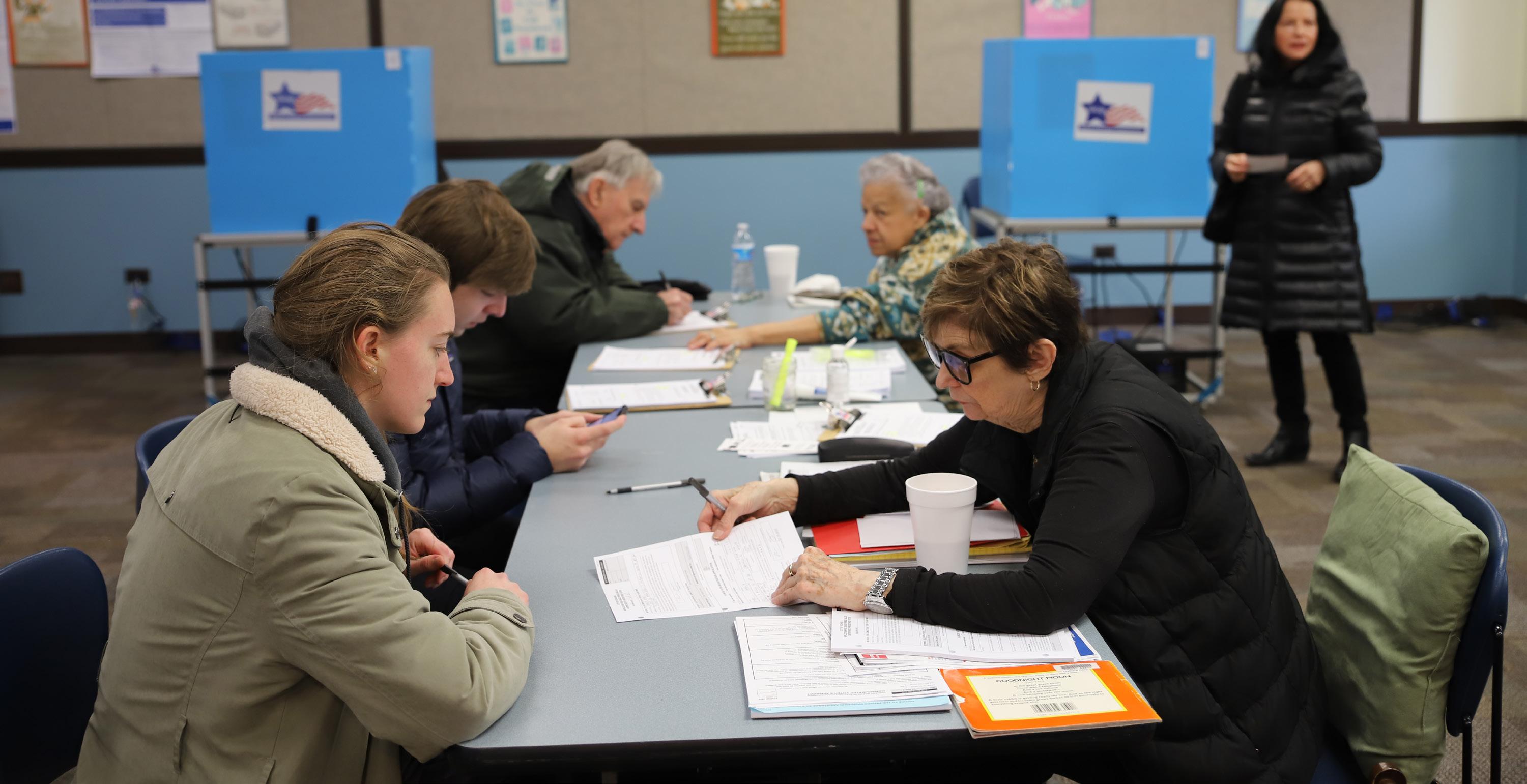
“I think [Evanston Board of Elections] got some time, they're trying to communicate to voters,” Bever said. “So I think there's a lot of lessons and a lot of info out there that would be good for the city to learn about this decision.”
Cassandra Rice, a resident of Logan square believes ranked-choice voting would be a move in the right direction for a more representative democracy.
“With ranked-choice voting, you're able to rank [candidates] with different platforms,” Rice said. “So then, as those results get tabulated, it really is an accurate representation of preferences for different candidates, because you're able to really pick who, you know, if it's not this person… then I’d be fine with the next one.”
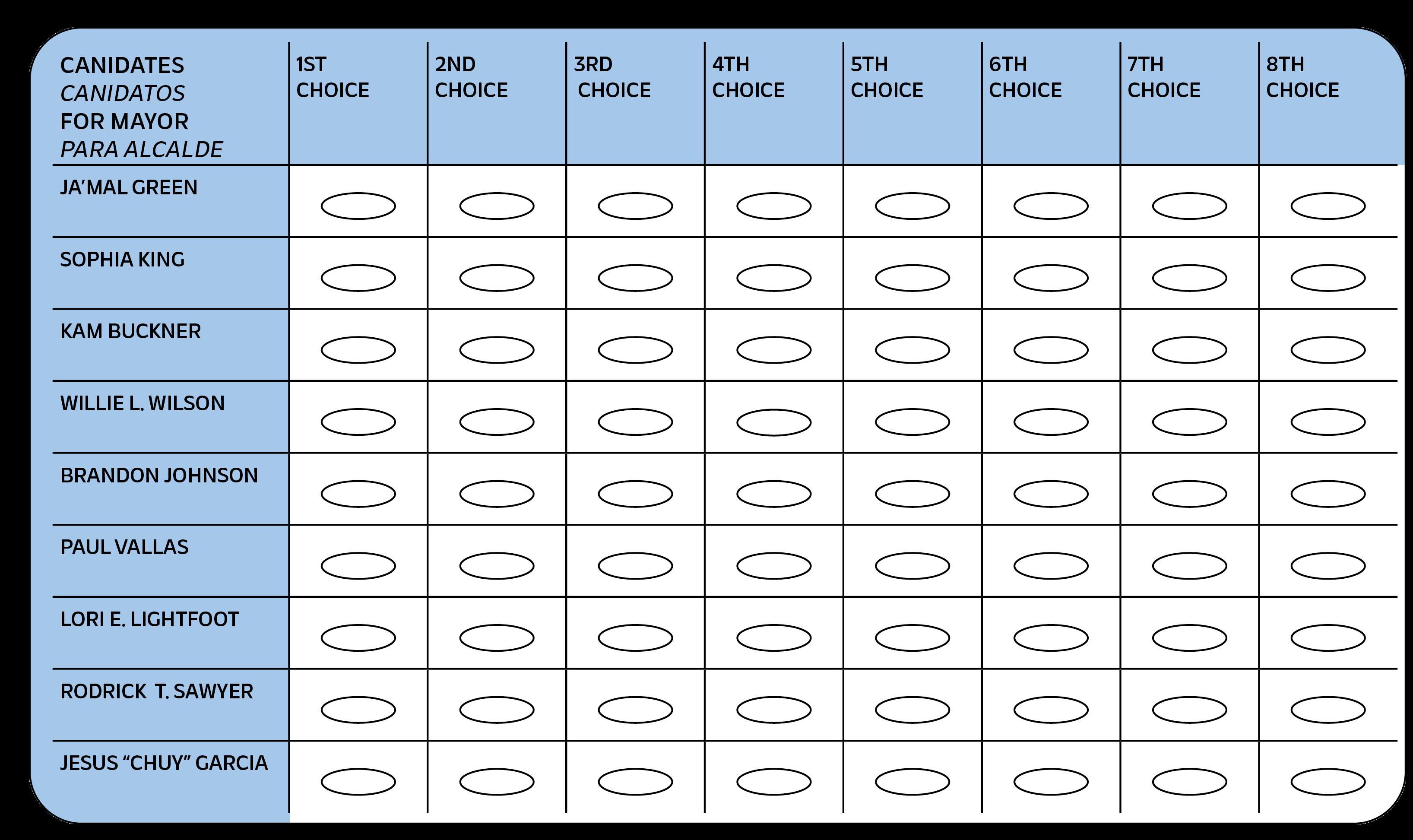
The runoff system relies on voters to stay engaged throughout the additional six weeks of election season and cast
their vote again. This is an unnecessary burden, especially considering the disengagement in municipal elections.
“Having to get out on Election Day is still very very prohibitive for a lot of people,” Rice said. “When you have a system like we do in Chicago, where there's this runoff process, I think it's an attempt to try and be more equitable or fair to the candidates in a way, but it's also kind of just a messier process of what rank choice voting would do in one fell swoop.”
While a lot of work must be done to educate voters to not alienate or create worse disparities in access to the polls, ranked-choice voting is an essential part of creating a more equitable election system in Chicago. Allowing people to vote for people they believe in instead of who they believe is most likely to win, makes elections as seamless and cost-effective as possible.
Professors shouldn't have to know how to teach
By Juliet diPadova Contributing WriterWe have all experienced it: That one professor that seems incapable of teaching despite an obvious passion for their subject. To the surprise of many, the majority of professors do not require any certification or prior teaching experience, and they should not have to.
According to the Britannica, pedagogy is the study of directive teaching methods rooted in psychology. The teacher is the leader of the classroom, altering their approach to best suit the emotional and cognitive needs of their students.
The word pedagogy literally means “leading children.”
Jamming pedagogical methods into the higher education system could do a disservice to university students. Students should instead be transitioning out of the structure and familiarity of high school into the exciting unknowns of college autonomy and self-motivation.
According to a statement from Caryn Chaden, associate provost for student success and accreditation at DePaul, each academic unit has its own rules for what qualifications are required of new hires that must be consistent with Higher Learning Commission Guidelines for “Determining Qualified Faculty.”
“Those guidelines typically focus more on content expertise and do not require instruction in pedagogy,” Chaden said.
In fact, a recent DePaul alumna now
teaching at an Illinois high school says that if universities were to implement pedagogy as a required certification, they “would certainly lose faculty. The 400 and 500-level professor does not need to know how to teach,” she said. This source requested to remain anonymous.
In elementary and secondary education, pedagogical knowledge is much more critical. Young students are rapidly developing both physically and emotionally as they learn to apply their own learning and apply it to their surroundings. Structure and assistance from their teachers are an imperative stepping-stone to higher education.
“As a high school teacher, my job is to teach students how to learn,” the DePaul alumna said.
Freshman could benefit from professors with pedagogical backgrounds as they make the transition between high school and college, however as we go along and gain independence and take charge of our learning, we no longer require the professor as a leader as pedagogy defines, but more so as a facilitator of our learning.
Pedagogy also focuses on adapting learning approaches to suit students’ needs, but because college students are often in classes with students ranging between the ages of 18 – 25 years old, learning needs, maturity and independence will widely differ and it is difficult to find a method that suits everyone.

However, issues in teaching methods certainly exist in university classrooms and most professors are willing to make them-
selves available to students to help and hear what they have to say.
In her undergrad, the DePaul alumna took a kinesiology course with a professor who she says was very intelligent, but her teaching style on some of the material made it difficult for the class to grasp. However, the professor made herself available to students for help.
According to the DePaul alumna, a situation like this where the legwork is on the students is a good test of their motivation, and that “it's a different story when the professor doesn't have office hours and isn't open to answering questions.”
DePaul also requires students to fill out anonymous online teaching evaluations that become available on D2L during the last few weeks of each quarter.
“Institutions take course evals very seriously,” said the DePaul alumna. “Professors care what students have to say and they want to know how they can do better.”
For professors, the right balance of what works best for both them and their students requires time and trial and error. Just because this process looks different from elementary and high school methods does not mean it is not the right approach for adult learners.
Column: García highlights Latino political success but future needs leaders who unite
By JaCqueline Cardenas La DePaulia Editor in ChiefAs journalists, our most important tools are our eyes, ears and mouths. We use them to interpret our surroundings, gather information and ask questions. Most of all, we use them to tell the truth.
As I covered Chuy García’s election night party, I used my tools to evaluate what this moment in history entailed.
I am not a politician, a historian nor a political analyst, but as a Latina journalist who closely followed the election coverage of other journalists, I argue my evaluation is worth considering.
My assessment is not absolute. I cannot speak to the experiences of all Latinos whose identities vary in social class, education, sexualities and more.
My perception is that of a second generation Mexican American, or a U.S. born individual with parents who were born in Mexico.
With that said, this is what I gathered.
Tuesday night’s highlights included former Chicago Public Schools’ CEO Paul Vallas and Cook County Commissioner Brandon Johnson securing the April 4 runoff spots.
Chuy’s election party symbolized a passing of the political torch to other Latinos.

It was a night mixed with pride for many but also fear for others.
The banners and TV screens that boldly read “CHUY FOR CHICAGO” may lead you to think the night was about Chuy, but the spotlight was really on his political supporters and endorsers.
Before Chuy even came on stage, a crowd of people chanted “si se pudo” or “we were able to do it” around Jeylú Gutiérrez, who made history becoming the 14th Ward’s first Latina alderwoman, ending former Ald. Ed Burke’s 50-year reign.
The phrase carries a rich history, one that can be dated back to the struggles of working class Latinos part of the United
Farm Workers Union in the 1970s.
American labor leaders Dolores Huerta and Cesar Chavez adopted the phrase during their 25-day fast in Arizona which inspired farm workers, as they demanded fair wages and better working conditions.
For many Latinos, it is a phrase that continues to invigorate and transpires into the political landscape. It makes us feel that this land of the free is also ours to thrive in.
People gathered around the new alderwoman, whose area includes Gage Park, Archer Heights, parts of Brighton Park and Chicago Lawn.
“I really, really, don’t have words to describe how I’m feeling,” Gutiérrez said during her speech.
Turning to look at García tucked away to the left of stage and acknowledged her supporters.,
“I thank you for giving me the opportunity, Chuy, and team, Chuy, and the coalition in believing in me,” Gutiérrez said.
Gutiérrez was not the only one who expressed gratitude towards García.
Cook County Commissioner Alma Anaya, told supporters to “soak in the fact” that
“this movement is 40 years in the making” and threw her fist up as cheers from the crowd followed.
Anaya also highlighted Michael Rodriguez’s 22nd Ward reelection.
“Chuy had ran so we could fly,” she said.
The “movement” Anaya refers to is a reflection of the years Latinos were kept from politics in Chicago and the sense of pride commonly felt to see someone that looks like you in positions of power.
In Wilfredo Cruz’s book “Latinos in Chicago: Quest for a Political Voice,” he said it was not until 1983 with Chicago’s first Black mayor Harold Washington that Latinos were put on the political map.
“He appointed a lot of Latinos to city government, and then he started campaigning for people running for office, like Luis Gutierrez for alderman, Jesus García for alderman, for state senator, so you start seeing the beginnings of political empowerment,” Cruz said in an interview with WTTW.
It was a full-circle moment for Latinos and García to be the product of Washington’s two term mayoral run.
“Thank you for believing in our mission,
and thank you for everything you left on the field today,” García said to the crowd.
While listing all his political positions from a member of the Chicago City Council to Cook County Board Commissioner, García paused briefly before saying, “and yes, a member of Congress in the United States.”
His affirming tone points to a common experience among some Latinos.
For many, some of us never thought we would graduate high school in the United States, make it to college in the United States or own a home in the United States.
Between the cheers and claps, I assure you García’s words touched the hearts of those who share an immigrant identity.
García’s personal experience speaks to voters in majority-Latino precincts. He earned about 39% of the vote according to WBEZ, though there is a conflicting notion that arises that we must acknowledge. García came in 4th on Tuesday night.
As a Latina, I fear my community will get too caught up in trying to only elect Latinos into positions of power out of years of spite without remembering that in order for our city to flourish, we need to build a coalition across communities.
Although García frequently touts his coalition in his speeches, his predominantly Latino political supporters speak otherwise.
We should celebrate that many Latinos are no longer cast in the shadows of society and have been able to overcome what many of our ancestors in their lifetime never could.
However, we should also be cognizant of other communities and work together to uplift each other.
Although many Latinos continue to face discrimination in society, I hope members of our community who are privileged enough to vote do not forget that we were once excluded.
It is imperative that we learn from history and not repeat the same exclusion tactics upon other communities that were once placed against us.
Focus MOVING
Paul Vallas and Brandon Johnson proceed
By Una ClearyThe 2023 Chicago mayoral election last Tuesday secured a spot in the April 4 runoff for Chicago Public Schools

CEO Paul Vallas and Cook County Commissioner Brandon Johnson. With a crowded field of nine candidates, Vallas and Johnson received more than half of the vote on Tuesday, as Mayor Lori Lightfoot came in third with a 17% of the vote, advancing Vallas and Johnson to the third-ever runoff election in Chicago history.
Runoff elections are relatively new to Chicago.
In 1999, a new state law went into effect making municipal elections in Illinois nonpartisan as well as creating the two-round election structure, according to the Chicago Tribune.
Reflected in the 2023 mayoral election, all candidates are labeled as “progressives,” even though none officially ran as Democrats.
Chicago had its first runoff in 2015, when former congressman and chief of staff to President Barack Obama, Rahm Emanual, won in the second round against Jesús “Chuy” García.
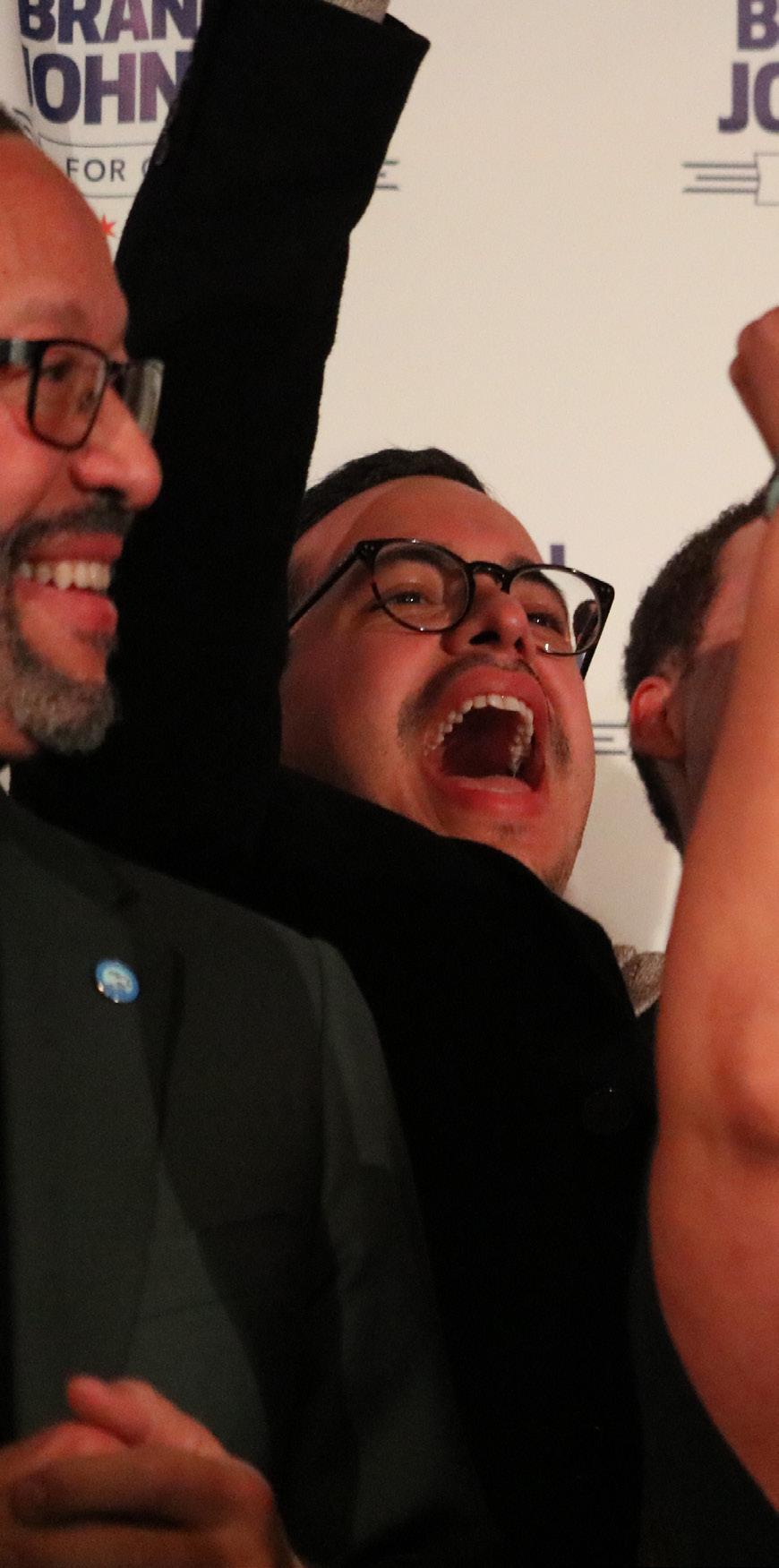

In 2019, Lightfoot won against Toni Preckwinkle with overwhelmingly 70% of the vote.
Now, García, Lightfoot and other candidates must look in a new direction and back either Vallas or Johnson.
Volunteer for García’s campaign, Gabriel Drawme, believes this runoff will be unique.
“I think this runoff will really be a sold for the city,” Drawme said.
For many, this runoff election is different as it is representing two diametrically opposed candidates.
“There’s much more at stake, more people will turn out,” said political science Professor Craig Sautter. “It will
be a lot more heated.”
García supporter Ingrid Alvareda now plans on voting for Johnson as he believes the candidate has more progressive ideas than Vallas.
“He’s not putting on a mask saying he’s a Democrat while Paul Vallas absolutely does,” Alvareda said.
Backed by Chicago’s Teachers Union, Johnson is calling for big investments in public schools.
Lexie Wheeler, another García supporter, plans on voting for Johnson in the runoff election as well.
“I love his plan for investing in public education and public transportation,” Wheeler said.
Vallas has hammered tough-oncrime messaging and won big in the Northwest and Southwest Side wards where many police officers and first responders live. Vallas also did well in wealthier neighborhoods such as Lincoln Park and downtown.
Nearly half of the voters are looking for a candidate who can best deal with crime, according to a poll commissioned by WBEZ, Chicago Sun-Times, Telemundo Chicago and NBC5.
With crime being the number one issue on the ballot, many voters Vallas’s crime plan appeals to Chicagoans and can be a make-or-break issue.
“It is a top issue because you can’t develop new businesses in a high-crime neighborhood,” Sautter said. “If Vallas can brand Johnson as a defund police candidate, I think he would have a good chance of winning.”
But for Drawme, he plans on voting for Johnson as he said Vallas is not thinking with the community in mind.
“It feels like there is a lot of push for corporate support and continues this idea of minoritizing our black and brown communities instead of empowering them in a way I believe Johnson does,” Drawme said.
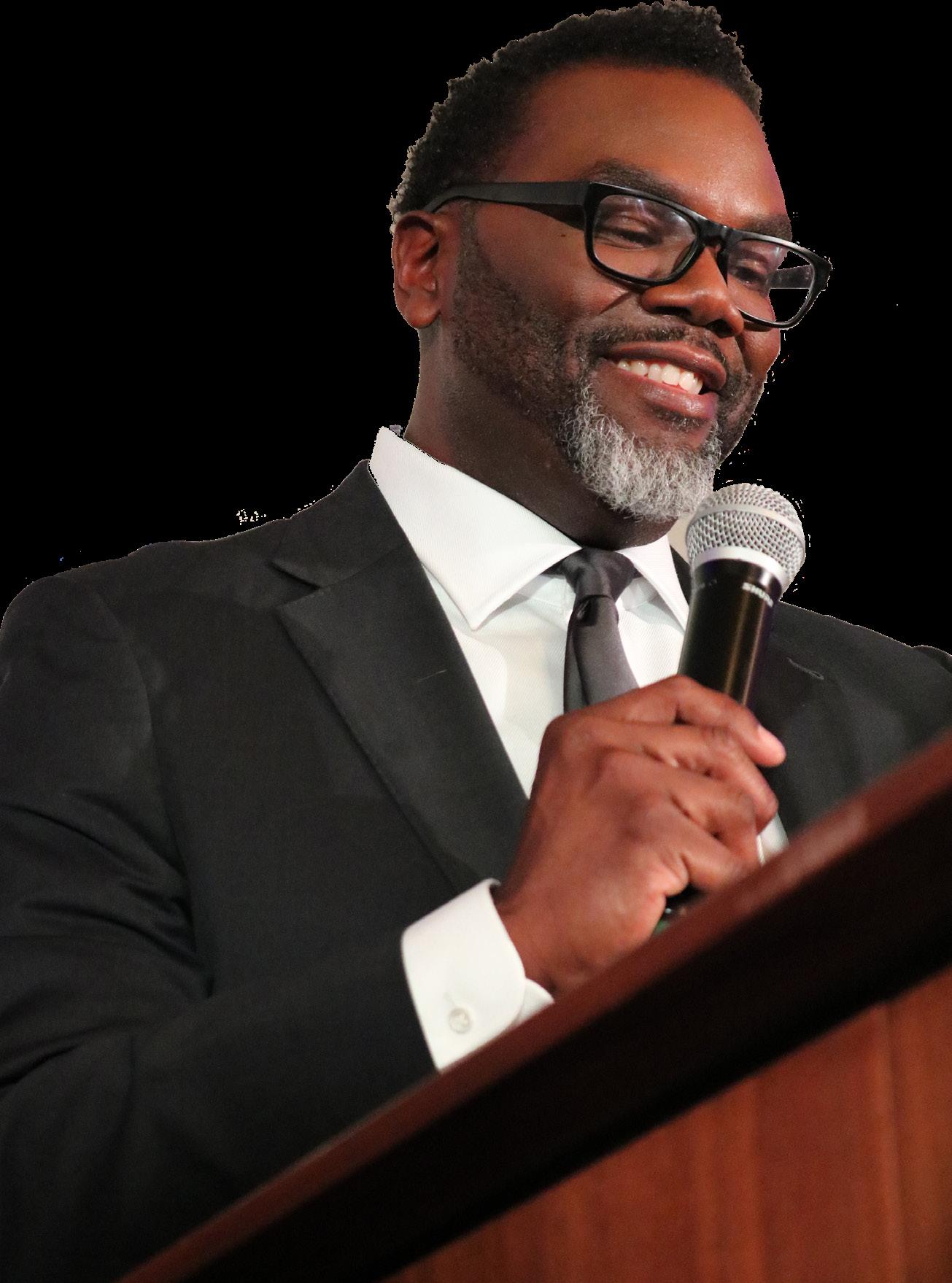
But with the recent endorsement of Former Illinois Secretary of State Jesse White, Vallas is one step closer to claiming the 20% share of Black votes needed to win the runoff election.
Sautter voted for García as well but believes that the rhetoric around Vallas being painted as a conservative candidate is incorrect.
“Vallas is being painted as a racist which he 100% is not and he’s being painted as a conservative which he’s 100% not,” Sautter said.
Sautter believes that name recognition and unreliable polls led to many candidates being dismissed quickly.
Candidates like Activist Ja’Mal Green received 2% of the vote and Alderman Sophia King received 1%.
“Lower-tier candidates really got shortchanged,” Sautter said. “As soon as people started pulling up these polls which are traditionally unreliable people started discounting them.”
Chicago will focus on Vallas and Johnson for the next month as April 4 election day is just 29 days away.
Congressman Jesús “Chuy” García and 7th District Cook County Commissioner Alma Anaya embrace following defeat in the Mayoral election.”There’s much more at stake, more people will turn out. It will be alot more heated,”
Craig Sautter DePaul Political Science ProfessorSupporters of mayoral candidate Brandon Johnson Left photo: Mayoral Candidate and Cook County Commissioner Brandon Johnson celebrates his confirmation into the April 4 runoff election. NADIA CAROLINA HERNANDEZ | THE DEPAULIA
FORWARD
proceed to the third-ever Chicago runoff election
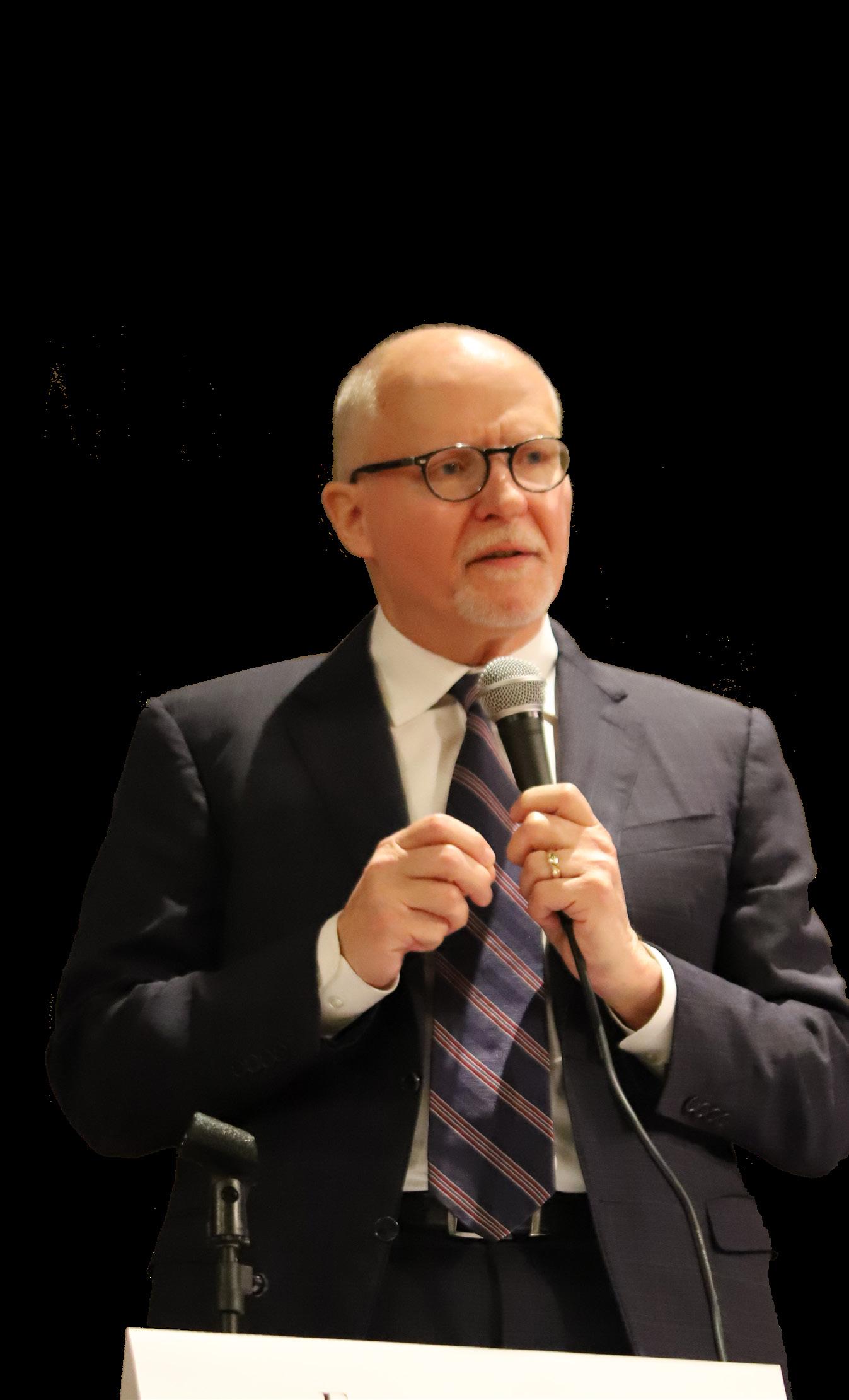



Chicago’s runoff election timeline

La DePaulia
COLUMNA: ‘Chuy’ García destaca
Como periodistas, nuestras herramientas más importantes son nuestros ojos, oídos y voz. Los usamos para interpretar nuestro entorno y recopilar información. Los usamos para tener conversaciones y hacer preguntas. Sobre todo, los usamos para decir la verdad.
Mientras cubría la fiesta de la noche electoral del congresista Jesús ‘Chuy’ García quien se postuló para alcalde, utilicé mis herramientas para evaluar lo que implicaba este momento de la historia.
No soy política, ni historiadora, ni mucho menos analista política, pero como periodista latina que ha seguido de cerca la cobertura electoral de otros periodistas, sostengo que mi evaluación tiene valor.
Esta no es absoluta y no hablo de las experiencias de todos los latinos, cuyas identidades varían en clase social, niveles de educación, orientación sexual y más.
Mi punto de vista es el de una mexicoamericana de segunda generación, o una persona nacida en los EE. UU. con padres que nacieron en México.
Dicho esto, este es mi análisis:
La noche del pasado martes incluyó varios acontecimientos importantes como que el ex director ejecutivo de las Escuelas Públicas de Chicago, Paul Vallas, y el comisionado del condado de Cook, Brandon Johnson, aseguraron sus lugares para la segunda vuelta de votaciones a la alcaldía que se llevará a cabo el 4 de abril.
Pero, finalmente, no debemos ignorar la importancia del evento simbólico en el que García le pasó la antorcha a sus herederos políticos latinos.
Fue una noche mezclada de orgullo para muchos latinos pero también de un sentimiento de miedo para otros.
Irónicamente, la noche no fue sobre García. Aunque, las pancartas y las pantallas de televisión que audazmente decían “CHUY FOR CHICAGO” podían dar otra idea, el foco de atención estaba realmente en sus aliados políticos y patrocinadores.


Incluso antes de que García subiera al escenario, una multitud de personas coreó “sí se pudo” o “pudimos hacerlo” alrededor de Jeylú Gutiérrez, quien hizo historia al convertirse en la primera concejala latina del Distrito 14, poniendo fin a la administración de 50 años de Ed Burke.
La frase misma tiene una rica historia,
una que se remonta a las luchas de la clase trabajadora latina que formaban parte del Sindicato Unido de Trabajadores Agrícolas en la década de los 70s.
Para muchos latinos, es una frase que continúa reactivando y reapareciendo en el panorama político, nos hace sentir que esta ‘tierra de la libertad’ también puede ser nuestra para prosperar.
Mientras la gente se reunía en torno a la nueva concejala cuyo distrito incluye los barrios de Gage Park, Archer Heights, partes de Brighton Park y Chicago Lawn, frente al escenario del Apollo’s 2000 en La Villita, ella sonreía con notable alegría.
Subió al escenario y dijo: “Realmente, realmente, no tengo palabras para describir cómo me siento”.
Volteándose para mirar a García, escondido a la izquierda del escenario, dijo: “Gracias por darme la oportunidad, Chuy, al equipo Chuy y a la coalición por creer en mí”.
Gutiérrez no fue la única que expresó su gratitud hacia García.
La comisionada del condado de Cook, Alma Anaya, quien dirigió la mayor parte del discurso de la noche, hizo un comentario posiblemente impactante diciéndole a la gente que “se empape del hecho” de que “este movimiento lleva 40 años en desarrollo” y levantó el puño mientras la multitud aplaudía.
“Chuy había corrido para que [nosotros] pudiéramos volar”, dijo Anaya.
El movimiento al que se refiere Anaya es un reflejo de los años en que los latinos se mantuvieron alejados de la política en Chicago y el sentimiento de orgullo que comúnmente se siente al ver a alguien que se parece a uno en posiciones de poder.
En el libro de “Latinos in Chicago: Quest for a Political Voice”, Wilfredo Cruz detalla cómo no fue hasta 1983 que el primer alcalde negro de Chicago, Harold Washington, puso a los latinos en el mapa político.
“Una vez que fue elegido, lo llevó al cargo, les dio trabajos en la ciudad, nombró a muchos latinos para el gobierno de la ciudad y luego comenzó a hacer campaña para que las personas se postularan para el cargo, como Luis Gutiérrez para concejal, Jesús García para concejal, para senador estatal. Entonces empiezas a ver los inicios del empoderamiento político”, dijo Cruz en una entrevista con WTTW.
Fue un momento de recordar los inicios
para los latinos en la política en Chicago y para García al tener una candidatura producto de dos mandatos de la alcaldía de Washington.
“Gracias por creer en nuestra misión y gracias por todo lo que dejaron en el campo hoy”, le dijo García a la multitud.
Y luego hizo una lista de los diferentes puestos que ha asumido durante su carrera política, desde miembro del Concejo Municipal de Chicago hasta el Comisionado de la Junta del Condado de Cook. Durante su discurso, García hizo una breve pausa antes de agregar, “y sí, miembro del Congreso de los Estados Unidos”.
Su tono afirmativo apunta a una experiencia común entre algunos latinos.
Para algunos de nosotros, nunca pensamos que nos graduaríamos de la escuela secundaria en los Estados Unidos, que llegaríamos a la universidad, y menos que seríamos dueños de una casa en este país.
Entre vítores y aplausos, las palabras de García tocaron el corazón de quienes comparten una identidad inmigrante.
Su experiencia personal toca a los votantes en los distritos electorales mayormente latinos donde obtuvo alrededor del 39% de los votos, según WBEZ.
Aunque, con esto, surge una situación contradictoria que debemos reconocer.
Como latina, temo que mi comunidad se vea demasiado limitada tratando de elegir solo a candidatos solo por ser latinos para puestos de poder debido a años de abandono, sin recordar que para que nuestra ciudad prospere necesitamos una coalición entre comunidades.
Aunque García promociona con frecuencia la búsqueda de una coalición en sus discursos, sus partidarios políticos predominantemente latinos comunican algo diferente.
Aunque debemos celebrar que muchos latinos ya no se encuentran en las sombras de la sociedad y han podido superar los límites que muchos de nuestros antepasados nunca pudieron, debemos ser conscientes de otras comunidades y trabajar para ayudarnos mutuamente.
Muchos latinos continúan enfrentando discriminación en la sociedad pero espero que los miembros de nuestra comunidad que tienen el privilegio de votar no olviden que alguna vez fuimos excluidos.
Es sumamente importante que aprendamos de la historia a no repetir las mismas tácticas de exclusión que han sido usadas en nuestra contra sobre otras comunidades.
el éxito político latino pero el futuro necesita líderes que logren unidad entre comunidades étnicos
El Festival de Sor Juana llega al Museo Nacional de Arte Mexicano
Por andrea Juárez Hernández y santiago gonzalez tiJerina Editora EditorEl Museo Nacional de Arte Mexicano presentará el festival Sor Juana 2023 que celebrará varias oradoras invitadas y una variedad de actividades se llevarán a cabo del 4 al 13 de mayo. el 4 de marzo y finaliza el 13 de marzo.
El festival Sor Juana es multidisciplinario y está enfocado en el triunfo de la mujer. Este año se celebran los aportes de diferentes artistas emergentes de Chicago y extranjeras, al igual que otras mujeres exitosas.
El festival fue fundado en 1994 y es en honor a Sor Juana Inés de la Cruz, una escritora y monja del siglo XVII, que luchó por los derechos educativos de la mujer. Sor Juana era dramaturga, poeta, y matemática. También es considerada una de las primeras feministas de América. Sor Juana y sus obras serán representadas y celebradas a través de todas las mujeres que se presentarán en el festival en Chicago.
Carlos Tortolero, el director ejecutivo y fundador del Museo Nacional de Arte Mexicano, comentó cómo inició la idea de crear este festival.
“Juana Guzmán, la ex vicepresidenta del museo y yo estábamos en un tren de Amtrak de Washington D.C a Nueva York, y hablábamos de cómo las mujeres aún no reciben su parte justa, especialmente en las artes”, dijo Tortolero.
“Ella tiene una hija y yo tengo dos, y estábamos discutiendo sobre cuándo cambiarían las cosas (para las mujeres). Vimos las artes como una oportunidad para hacer una declaración en nombre de las mujeres”, agregó Tortolero. “Se nos ocurrió la idea del festival y por supuesto, la única persona por la que tenía sentido para nosotros nombrar el festival era Sor Juana”.
El festival también se enfoca en el activismo y la lucha contra el odio. Las expositoras en el evento incluyen: Sylvia Guerro, Ely Guerra, Esperanza Gama, Alejandra Bogue, Erika L. Sanchez, Virginia Martinez, María Hinojosa, y Geo
Meneses.
Cada una de las talentosas mujeres compartirá un poco de su propia experiencia de vida.
Lilibeth Arreola, quien es parte del Departamento de Artes Performativos del museo, cree que es importante celebrar a estas mujeres porque no es fácil ser exitosa en esa industria siendo mujer.

Una de estas notables mujeres es Virginia Martinez, una abogada jubilada, exalumna de DePaul, que ha dedicado la mayor parte de su vida profesional a organizaciones sin fines de lucro defendiendo a mujeres, niños y a miembros de la comunidad latina en general. Martinez fue parte de los 125 exalumnos destacados en el aniversario de los 125 años de DePaul y fue una de las madres fundadoras de la Facultad de Derecho Latino.


Recientemente publicó su primer libro para niños titulado “Adventures with Abuela: Let’s Go to the Zoo”, o “Aventuras con Abuela: Vamos al zoológico”, en español. Sus historias son comúnmente escritas en inglés y en español, y está trabajando en un nuevo libro, dijo ella. Martinez dice que encuentra motivación para escribir estos libros en sus dos nietos.
“Sabía que hay muchos niños que nunca pueden ir a los museos, a los parques, ni a ningún lado, y todo se ha vuelto tan costoso que necesitaba escribir estos libros.”, dijo Martinez.
Ella publicó su libro durante el festival para los niños que asistan al evento. Su propósito es poder exponer a los niños y a sus padres a diferentes recursos y actividades educativas.
Aunque escribir estos libros no solamente le trajo éxito, sino también dificultades.
“El costo de imprimirlos, el costo de hacer mi propio marketing, básicamente. Eso es difícil”, dijo Martinez.
Sus libros están a la venta en Amazon o en su página web.
Martinez estará presente el 8 de Abril
en el festival.
Tortolero está orgulloso de haber podido ser parte de la creación del festival Sor Juana y cree que ha sido una gran influencia positiva para la comunidad.
“Me gustaría pensar que el museo ha sido fundamental para promover el conocimiento de Sor Juana”, dijo Tortolero.
Si quieres saber más sobre este evento puedes conectarte con el museo vía redes sociales o sitio web. Los boletos para el evento ya están a la venta.
Los Latin Grammys hace borrosa la distinción entre latino e hispano
El mes pasado la academia de los Latin Grammys, conocida como Latin Recording Academy, anunció que por primera vez en la historia, los Latin Grammys del 2023 se presentarán fuera de los Estados Unidos, en la provincia española de Andalucía.

La decisión ha provocado reacciones encontradas, ya que España es un país europeo y no latinoamericano. Aunque es un país hispanohablante, los intentos de los Latin Grammys para seguir incluyendo la música Española hacen borrosa la distinción entre el significado de latino e hispano.
“De algunas maneras uno puede decir que es como si España estuviera colonizando a los Latin Grammys”, dijo Jocelyn Herrera, estudiante de la Universidad de Illinois UrbanaChampaign.
De acuerdo con la Universidad de Duke, el término hispano se refiere a una persona con raíces en un país donde el lenguaje predominante es el español, mientras latino se refiere a una persona con raíces en países de Latinoamérica o el Caribe.
Carolina Sternberg, profesora asociada de Estudios Latinoamericanos/ Latinos y Estudios Étnicos Críticos en DePaul, reconoce que aunque las identidades son fluidas, y no hay una identidad latina universal, el término
hispano/a no es inclusivo a toda la diversidad de identidades latinas.
“El término ‘hispano/a’ es estático y rígido, por lo tanto, no refleja el aspecto matizado de la identidad cultural de alguien”, dijo Sternberg.
Según ella, Latinoamérica tiene una abundancia de países e identidades que no pueden estar confinadas solamente a países hispanohablantes.
“Las trayectorias coloniales de las naciones Latinoamericanas (España, Portugal, Francia, Inglaterra, Holanda, para mencionar algunos de los poderes coloniales presionando las regiones por siglos) y lenguas habladas actualmente, son muy diversas en Latinoamérica”, dijo Sternberg.
Por lo tanto, el cambio lleva a algunos a preguntarse si los Latin Grammys están de acuerdo con lo que deberían de representar como premios latinos, a artistas de latinoamérica y no a artistas hispanohablantes.
“No van a estar representados de una manera adecuada”, dijo David Ocampo, un estudiante Latino de DePaul.
Otros tampoco están de acuerdo que artistas hispanos se hayan otorgado premios latinos.
Cuando Rosalia, una artista española ganó un Latin Grammy por el mejor disco del año por su álbum, ‘MotoMami,’el año pasado, hubo controversia en las redes
sociales criticando la premiación. Ese mismo año Rosalia fue nominada bajo ocho categorías latinas y ganó cuatro premios.
Aunque los Latin Grammys mantienen la representación de un número de diversos artistas, el evento alimentó un debate sobre si los artistas hispanos deberían ser nominados para premios latinos.
Artistas hispanos como Rosalía han colaborado con varios artistas latinos como Bad Bunny o Ozuna y dan testimonio al éxito de la música española
dentro de la industria de la música latina. Pero unos latinos piensan que la inclusión de artistas hispanos puede disminuir las oportunidades de los artistas latinos para ganar.
“No es justo”, dijo Herrera. Aunque la música española también tiene mucha influencia dentro de la industria de la música latina, la decisión de presentar los Latin Grammys en España y la adquisición de premios latinos por artistas hispanos puede opacar la representación de artistas latinos.
Arts & Life
SPIRITS OF DEPAUL
Hospitality classes focus on beer, wine education
By M ax R ayMan & Joey StephenSAlcohol becomes the focus of two classes at DePaul. The professors behind the HSP 398 and HSP 333, sought after an educational space to elevate student’s understanding of wine and beer.
For upperclassmen with open electives, classes in the School of Hospitality may not be the first place students think to look, but “International Wine Education and Management” and ”Business of Craft Beer” have a lot to offer.
These two classes study the production and consumption of beer and wine, taught by adjunct Joseph LeRoy and associate professor Lisa Young respectively. Students must be 21 years old by the first day of class since there is a tasting element.
During weekly tastings, students are encouraged to engage with the experience of the drink, examining the appearance, aroma, as well as elements that make up the taste and mouthfeel in class.
While many DePaul students are familiar with the wine course, the beer class has slightly flown under the radar since its start in 2021.
“I was looking through the open electives on Campus Connect and I saw the title and thought it sounded interesting,” senior James Shipp said.“I just stumbled across it.”
At the end of each course, students are qualified to take the Level One Cicerone exam and Level One Sommelier exam. Sommelier and Cicerone Certifications are trained and educated wine and beer professionals who have opportunities to work in fine dining and in many more specialized roles.
“It's actually crucial from a harm reduction standpoint to learn how to appreciate [alcohol] and know your limits as well,” said Patrick Cox, educator at the Chicago Winery and former DePaul student who took wine education.
The professor’s took their personal experiences learning about beer and wine and translated them to their respective classrooms.
Joseph LeRoy teaches The Business of Craft Beer
As a slideshow of his wife and son play on his computer, Joseph Leroy sits at his desk planning his classes. Above his head is a shelf that holds his multiple beer certificates including his World Brewing Academy Concise Course in Brewing Technology Certificate.
An adjunct professor and the operations coordinator for the School of Hospitality Leadership at DePaul, his days are always busy. If he is not teaching or preparing coursework for his business of craft beer class, LeRoy spends his time helping manage the department.
Inspired by the success of the international wine education and management course, LeRoy appealed repeatedly to the school to allow him to start a craft beer
class.
“Anyone that’s managing a bar needs to have some education, familiarity and be able to speak intelligently to the beers that they had on a beer list, and that was largely how I designed my course,” LeRoy said. “This idea of how do I take somebody's a college student that's familiar with whatever beer they had access to since they turned 21, how do I take them and make them into somebody that can have that intelligent conversation about beer?”
The class started in fall 2021 and is currently designated as a special topics class, but LeRoy is hoping to change that soon. A three-hour lecture, the first half is spent going over the ingredients, process and intricacies of brewing, while the second half is spent tasting and discussing different beers.
“I love the fact that he brings in and then lets us touch the ingredients that go into brewing,” said senior Viktoria Olman.“He lets us try them and eat them. He also brings in the equipment to show how everything works. I genuinely appreciate how he makes us interact with the lecture material.”
LeRoy’s interest in craft beer dates to his time as a student at the University of Tennessee in 2011. His then college roommate was a collector of rare beer, and his interest rubbed off on LeRoy.
“What they call the high gravity bar opened up which had just an incredible selection,” LeRoy said. “It just blew my mind
as a way for students to expand their taste.
how many different beers there were. Just to have the variety outside of the kind of the highlife and PBR lifestyle that I was so comfortable with before then. I started going there, really exploring the menu and getting to know the staff there.”

LeRoy graduated with a biology degree and shortly after moved to Chicago. Working in sales, he spent his free time homebrewing in 2013. In 2015, he was ready to make a career change and was sitting at a crossroads.
“I was in a transitional period where I was getting out of sales and considering either pursuing further education or going into the beer industry as a brewer,” Leroy said. “Ultimately, I determined that I could become a brewer at a later time in my life, if that was really what I wanted to do, but I had this unique opportunity because I got the job at DePaul.”
That job was a department assistant in DePaul’s biology department.He had started undergrad at DePaul before transferring to Tennessee after two years. Due to the light workload, he spent his nights and weekends working in breweries.
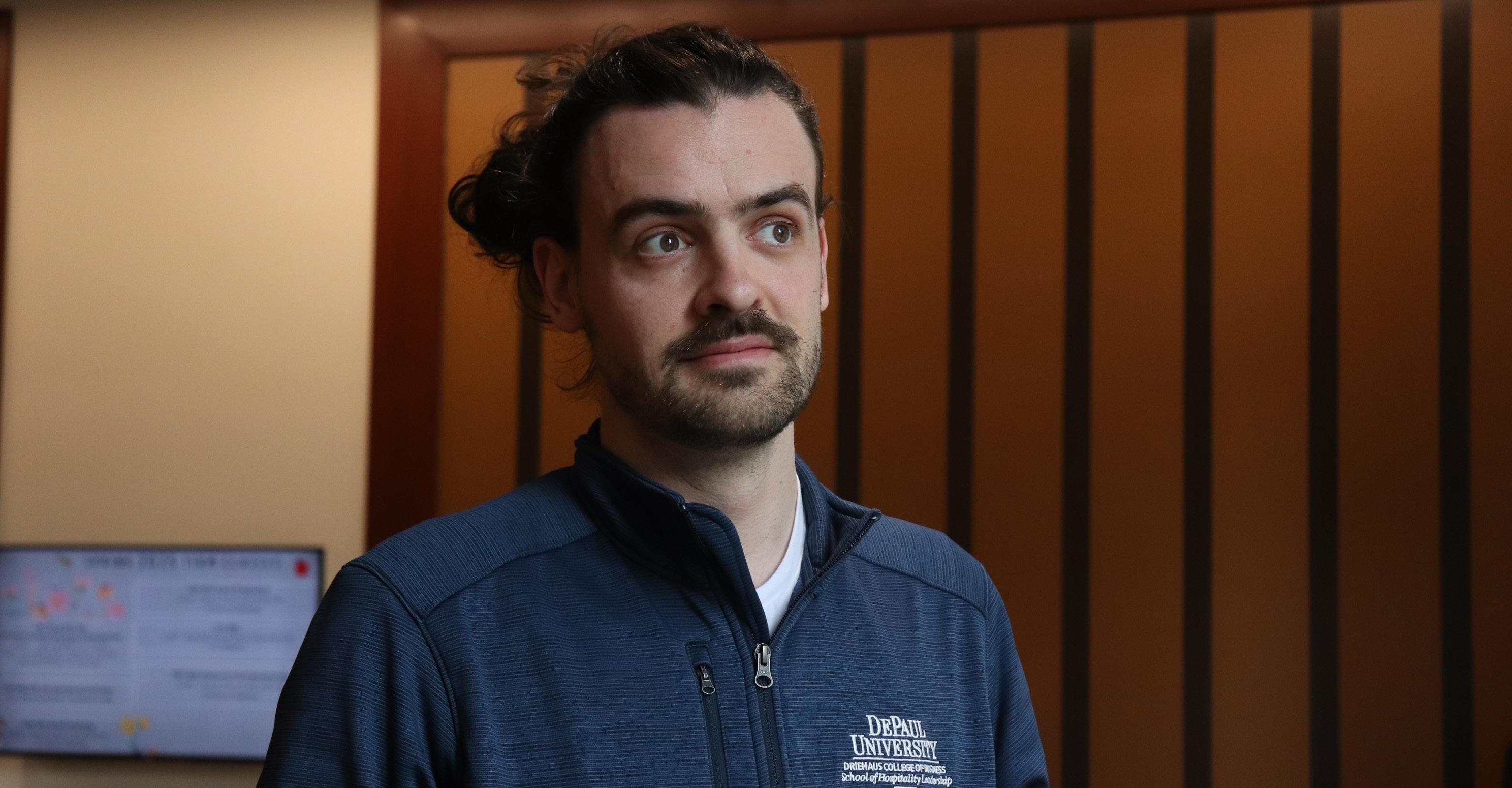
In 2017, he had the opportunity to become a business manager. At the same time, LeRoy decided he was ready to start an MBA with concentrations in entrepreneurship and hospitality.
“When I was still working in the biology department, I told myself that if I find
LINNEA CHENG | THE DEPAULIA an opportunity where this can make sense financially, I really would like to jump on a graduate degree,” LeRoy said. “ I was able to, with the flexibility of my professors, design all of my assignments, write all of my business plans, and focus on my education through the perspective of somebody that was looking to go into the craft beer industry.”
LeRoy graduated with his MBA in 2020 and was scheduled to start teaching the business of craft beer that spring. Unfortunately, COVID-19 derailed his plans, and he had to wait a year before he could put his dream into action.
Despite only having taught the class for a few years, his students love his enthusiasm and teaching style.
“One thing about Professor LeRoy is that he is a great guy,” Shipp said. “He is down to earth, loves what he is teaching and is very passionate about what he does. He brings a ton of energy that makes class fun.”
Overall, LeRoy has been pleased with the progress of his class.
“I’m just excited to grow as a faculty member and improve the class,” LeRoy said. “It’s the feedback of my students that allow me to grow. I’m trying to develop myself as a better member of the faculty and a better teacher.”
DEPAUL
Lisa Young: Wine Class: International wine education and management class
While others discourage eating in class Lisa Young, director of the School of Hospitality Leadership, centers her entire class about pairing the right foods with wine.

As a former flight attendant Young is familiar with making passengers feel safe and comfortable on board while presenting herself as warm and classy.
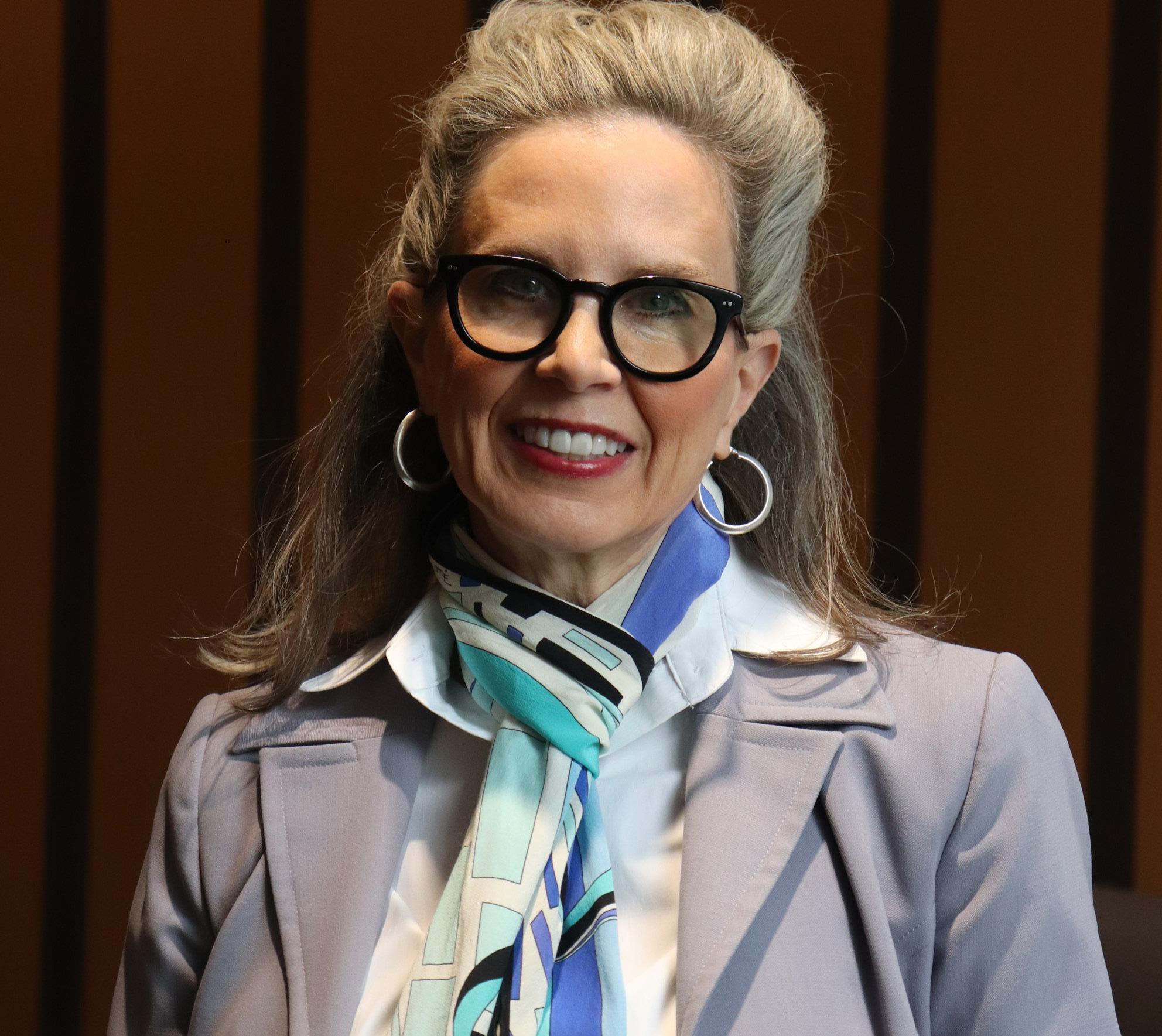
Young’s fascination with wine started in high school on a study abroad trip to France. She wondered about the process and specimen of wine, specifically Champagne. Becoming a flight attendant after she finished undergrad would open the doors to explore France and wine for herself.
“We used to have a group of us who
were called the Champagne Marauders,” Young said. “Wherever we would travel, we would try the local sparkling wine, and share our thoughts about it… [wine] gets people talking and maybe even gets people talking that don't know each other.”
She traveled the world this way, visiting wineries from Houston to Paris. Young and her fellow flight attendants would pool their money to buy a couple bottles of wine and taste them in one of their rooms, comparing and contrasting the wines over cheese and fruit.
“Wine is alive,” Young said. “The wines we taste in class, if we store them and taste them five years from now, they would taste completely different. It’s alive and for me that’s fascinating.”
Recent DePaul graduate Patrick Cox was
connected to their current job at the Chicago Winery through the wine class.
“She really eliminates the snobbery around wine,” Cox said. “Sure, you can be very enthusiastic about it, but ultimately the main philosophy is that wine is for wine lovers.”
In class, Young places students in groups to talk about the wine samples and invites them to bring food to class. Ideally, students will have each of the five flavors to taste with wine samples: sweet, salty, sour, bitter and umami.
Not only does she talk about wine tasting as a social experience, but how to promote healthy drinking habits.

“In the first couple of weeks in class, we discuss how people can make bad decisions if they've had too much to drink, and so we’re also learning to be able to appropriately consume alcohol, and that’s particularly important if you’re selling it,” Young said.
For those who work in a bar, a winery or a hotel, serving alcohol responsibly is part of the job.
“You will always have a job with hospitality which is a little bit annoying, because personally, I would love to branch out from hospitality at the moment, but you will always have something to fall back on,” Cox said.
Drinking comes up in many professional settings, so knowing wine can be useful for many students in and outside of the Hospitality School.
“Many graduates go into special events and wedding planners may be faced with choosing wine profiles that pair well with a wedding cake and to present a tasting to the couple,” Young said.
However, wine and beer are present in other ways for those going into other sectors.
“It doesn't matter really what end of the business world you're in, you need to be confident in how you're ordering wine when you're in a business meal. It's a skill,” Young said.

K-pop meets Chicago
HELIXX dance crew spins together community and passion
Practicing choreography and filming audition videos in her dorm room the first week of the school year, freshman Riley Mays began her college career by finding an outlet for her passions of dance and K-pop.
She found moving to Chicago offered more than just academic opportunities as she researched nearby K-pop dance crews, hoping to merge her dual interests into one activity. Eventually, Mays stumbled upon HELIXX, a Chicago-based K-pop dance crew, and after auditioning and being accepted to the dance crew, she found a support system and source of joy she can rely on every week.
“I was so excited, and I just remember jumping up and down and crying when I got in,” Mays said. “Everyone looked really close on the team, and I realized I wanted to do something like that. We’ve done so much since I joined in September and it really has been such a joyous experience.”
HELIXX was founded by Leya Buena and entered the dance scene in December 2017. Focused on bringing the entertainment and style of K-pop dancing and music to the community, the crew mainly performs at events, like grand openings of local businesses and celebrations in Chinatown, and post cover videos to its social media pages.


“We celebrate K-pop culture, like Korean pop music and idols,” said Gianna Cabrera, a dance member of HELIXX and sophomore at Triton College. “We watch those idols' performances and try to incorporate their strength and power into live experi
crew impacts her DePaul community. She attributes this to the small population of students involved in any type of dance on-campus, creating an interconnected community based on the common interest.
“The dance community in Chicago is small,” Nagode said. “If you know one person, they know another person that knows a person that you know. That's really how HELIXX connected me to DePaul more.”
Mays believes HELIXX helped her build a support system for herself in both dance and at school, even if a majority of the dance crew’s members may not go to DePaul. She has brought aspects of HELIXX to her job at The Ray by teaching the K-pop dances she
“I’ve felt this overwhelming amount of joy and community from just being a part of this team and being able to incorporate that into my life here at DePaul too,” Mays said. “[Nagode] and I have even practiced together at The Ray. There's definitely a connection between the two worlds in the sense
HELIXX performed at DePaul’s Lunar New Year Gala in late January and is currently practicing for a new cover video. The crew rehearses regularly at the Puzzle Box Dance Studio in Avondale where constant hard work and events have transformed the members from a crew into a community.
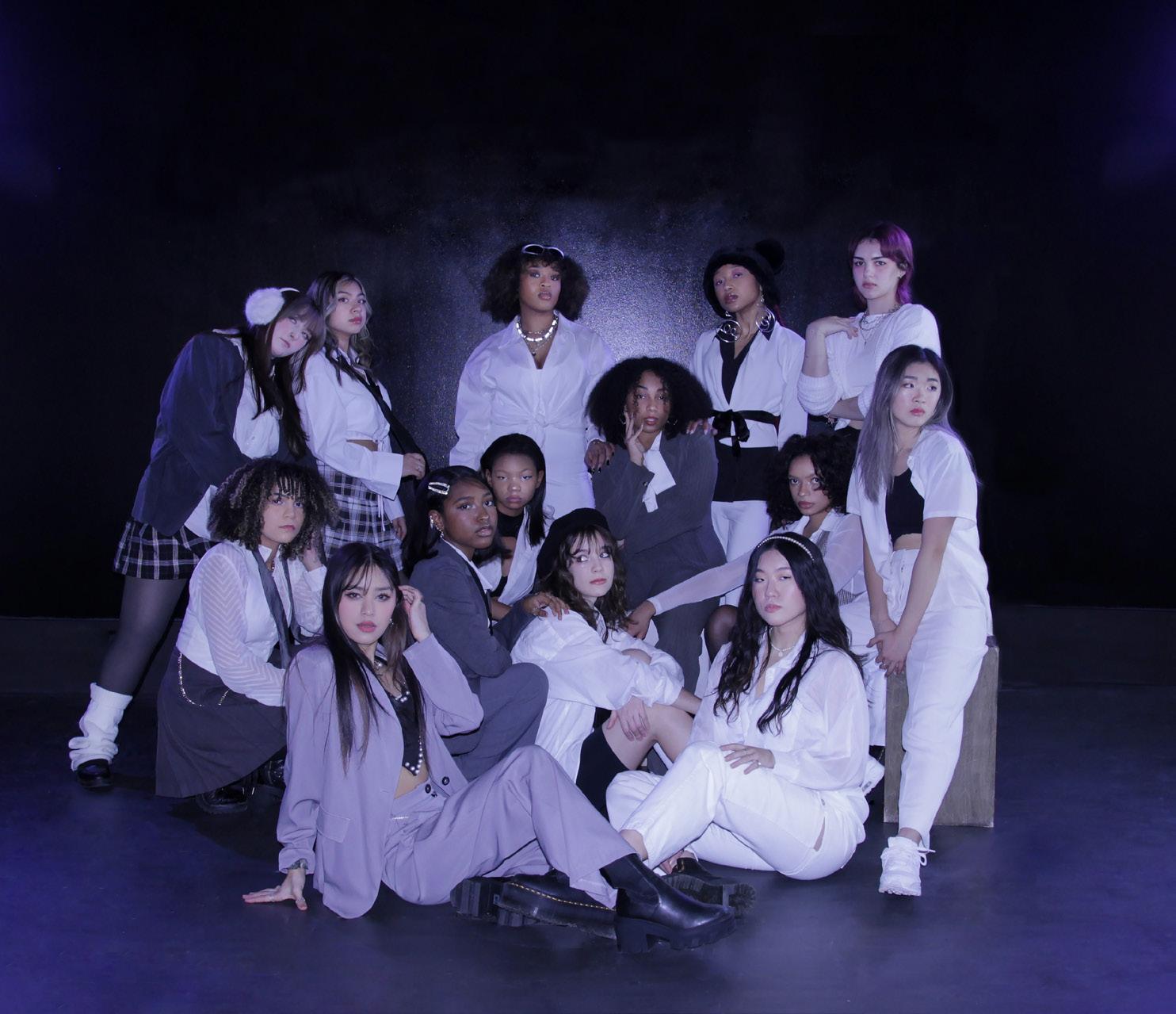
“It's not just about dancing for me,” Nagode said. “I wanted to experience new things with other people and create really close bonds through those. That's something I really get with HELIXX and even though I’m a part of two other dance groups, I don’t really get that same experience with them.”
Members of the crew hold a mixed amount of dance experience, with many teaching themselves rather than going through professional training. For
Cabrera, her experience came during years in musical theater and is largely self-taught.
“When we all come together and dance, we just mesh,” Cabrera said. “There suddenly is no difference in our abilities because you can’t see it. For me, I appreciate how much I’ve grown as a dancer through HELIXX because I didn’t have a lot of experience beforehand.”
The dance team holds biannual in-person auditions in November and May around school breaks to ensure applicants have the free time necessary to practice their dances and schedule an interview. For those interested in joining the team in between season auditions, online applications and video auditions are accepted year-round.
“The HELIXX I see people auditioning for now is definitely not the same as it was back then,” said Cindy Choe, management director of HELIXX and freshman at the University of Illinois at Urbana-Champaign. “Especially when I joined [five years ago] and how we made it into what it is today, it's become my safe space.”
Through dance and a unified appreciation for K-pop, Choe believes the team is able to represent its sense of community to larger audiences, creating a supportive atmosphere for viewers and dancers alike.
“It's amazing what that sense of a whole community can do for dance and performing,” Choe said. “Whenever I perform on a stage, I just feel so powerful. The thing is though, this isn't just a dance crew, it's a family.”
AUTHOR OF ONE OF THE MOST BANNED BOOKS IN AMERICA DETAILS THEIR ACTIVISM
By nadia CaRolina heR nandez Print Managing EditorExcited whispers filled the room as community members and DePaul students awaited best-selling author George M. Johnson to grace the stage.
Johnson, a Black queer nonbinary author, activist and journalist, wrote their memoir “All Boys Aren’t Blue” in 2020 and it soon became a New York Times bestseller, as well as the third mostbanned book in 2021.
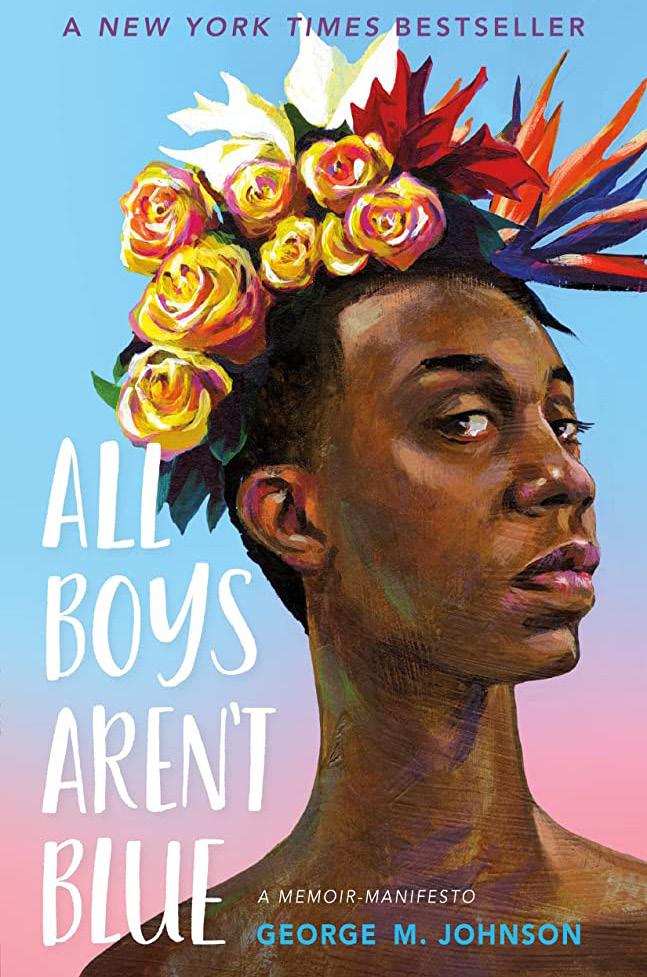

Despite the push for banning Johnson’s memoir, they exuded confidence while reading their chapter “You Can’t Swim Wearing Cowboy Boots,” from their memoir. They recounted that while their cousins wanted new sneakers, Johnson wanted cowboy boots and getting over their life-long fear of water.
Afterwards, a panel featuring DePaul faculty and students started a conversation with Johnson about their work, life and activism regarding book banning.
While recounting their family dynamics, Johnson kept in mind how they portrayed the American Black encountering queerness. They commented how the media will perpetuate ideas that Black families are “archaic and monolithic.”
“When I was writing those experiences, that [I] wasn't painting some picture that was built in the traumatic things that I experienced,” Johnson said. “I wanted to tell the totality of the story how even though my family really loves me [and] really supports me, that there was also things that we got wrong and to be able to share what we got wrong but also how we grew through those things.”
“All Boys Aren’t Blue” is banned in eight states, including Missouri and Florida, in the country due to “profanity, sexually explicit and LGBTQIA+ content.”
Heather Montes-Ireland, assistant professor in Women & Gender Studies, believes that those challenging their book use children as a mechanism.
“I'm thinking about the emotion or impulse behind these book challenges and about the ways the figure of the child is evoked like involuntary childhood in -
nocence,” Montes-Ireland said. “That so many times these book challengers are using rhetoric…to say, ‘we need to protect so and so.’”
Their book is considered Young Adult or YA for ages 12 through 18. They made the decision to write into YA because they wanted to paint the sexual queer experience realistically for Black youth.
“I decided that if I'm going to write for young adults, I'm going to give them the truth about what it felt like, what it was like and how I experienced it, how I processed it, what consent is,” Johnson said. “It all ties back to [the fact] we have no sex education when young adults are becoming adults.”
Johnson was adamant that they write about their queer sexual experience because they believe this age group needs the support the most. “All Boys Aren’t Blue” depicts their encounters with consent and sexual abuse. In 2018, 26 million sexually transmitted infections in the US, and half were from people ages 15-24, according to the CDC.
So when local counties try to ban stories like “All Boys Aren’t Blue,” Johnson said Black youth risk losing another potential resource to learn about sex education.
“Whether they try to ban it or not it has to go out there, and it has to be in the world for that age, because that's the age who needs it the most,” Johnson said. “That's what I think about when I'm writing those moments in those moments, thinking about the Black child. The fact that if they don't read about it here, they may never have another resource that they can get it from. I don't want them to have to make the same mistakes.”
Challengers have accused the book as being too pornographic. Although book bans are targeting K-3 grade levels, they actually affect K-12 students.
“My book is not for children,” Johnson said. “They use that as a dog whistle word, because every time I go up, it's a child because it makes you think that some kindergarteners read my book.”
Macky Sahelu, undergraduate and staff at the LGBTQIA+ Resource Center,
recounted how they’ve worked with highschoolers recently, and was surprised how much they know about the world.
“I'm always just really surprised by how much the young people know about the world right now and like about oppression and privilege and they bring up things like fascism and like medical racism,” Sahelu said.
High schoolers and librarians are at the front lines of fighting against book bans nationally. Young activists are fighting to keep books like Johnson accessible.
“I was not aware of any of that when I was in high school,” Sahelu said. “I think a lot about how much power teenagers have for creating.”
Johnson feels inspired by the students who are fighting for books like theirs.
“They want to know more,” they said. “They want to have empathy, they want to know about communities outside defending their rights to have access to materials that they feel not only that they need, but that their classmates need.”
‘Villette’: moody, mesmerizing tale of love and solitude
By lauR en CoateS Staff Writer
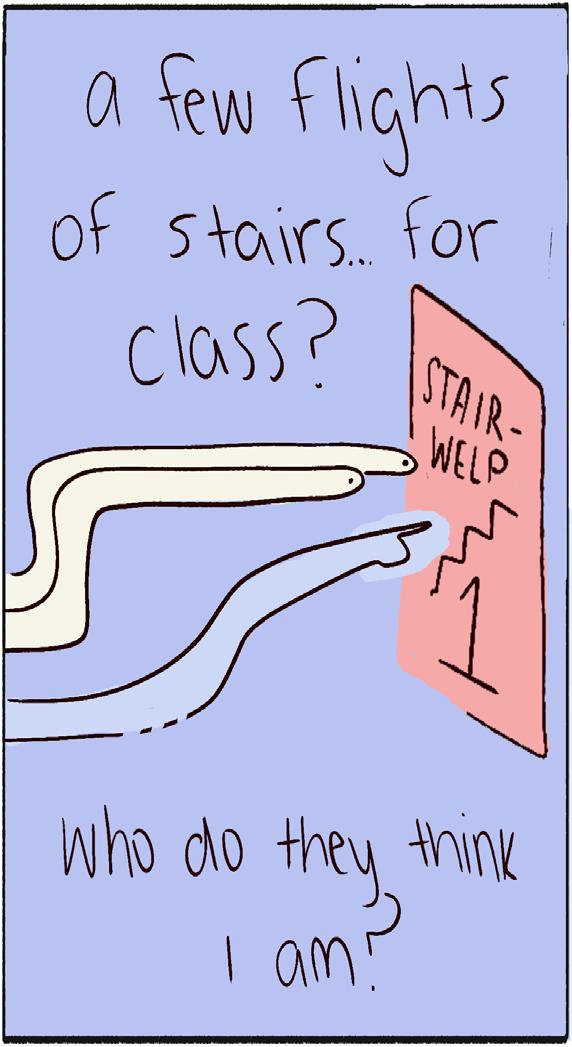

Coinciding surprisingly neatly with the theatrical release of “Emily,” a historical drama chronicling the life of “Wuthering Heights” author Emily Brontë. Chicago’s own Lookingglass Theatre also seems to have Bronte on the brain with the opening of their newest world-premiere play, “Villette.” “Villette,” written by Emily’s sister Charlotte, Lookingglass bills it as Charlotte Brontë’s undiscovered masterpiece, a sweeping, moody tale of a mysterious young woman’s life in provincial France. With a bright, unflinching lead in Mi Kang, “Villette” is a mesmerizing, if unbalanced, staging of what could go on to be a modern classic.
Starring Mi Kang, Debo Balogun, Helen Joo Lee, Ronald Roman-Melendez, Renee Lockett and Mo Shipley — a modest but rock-solid ensemble cast — “Villette” follows the introverted, whip-smart Lucy Snowe (Kang), a young English woman who journeys to provincial France in the wake of an unspecified family tragedy. Her time in France is marked by unlikely success, friendships, and possible romance, in addition to the ever-present shadow of a ghost that seems to haunt the grounds of the school where Lucy teaches. Though the plot doesn’t sound like much of a good time on paper, there’s a remarkable sense of humor and comedic sensibility that bears the mark of a strong director and a fondness for regency-era romance. Lucy is a spirited protagonist, prone to fourth wall breaks and frequently babbling to the audience, often at the expense of characters she’s sharing the scenes with. The Lookingglass Theatre’s unique space and staging also lends the production and its cast a capacity for interaction with the crowd that would be lost at a
different venue.
In addition to a fresh, witty sense of humor where needed, “Villette” is most prominently a capital “G” capital “R” Gothic Romance, a tragic, sweeping tale full of pining, hidden love letters, and ghosts of dead lovers. Where act one’s tone is closer to that of “Pride and Prejudice” or “Emma,” especially in its characterization of Lucy alongside Kang’s energetic, tongue-in-cheek performance, act two turns up the drama, feeling much more like a sister piece, if you’ll pardon the pun, to “Wuthering Heights.”
On one hand, the changes between acts in tone and focus is a testament to the versatility and flexibility of the ensemble cast, but it does make for somewhat of a jarring, dissatisfying experience as an audience member. This particular issue is encapsulated in the two love interests “Villette” proposes for Lucy: the charming, down-to-earth Dr. John (Roman-Melendez) and the stiff, haughty but achingly earnest Mr. Paul (Balogun).
It’s hard to pick which character is better, per se. Certainly, both actors give impressive albeit drastically different performances, and both share remarkable chemistry with Kang. The majority of the first act is spent building towards a possible romance between Dr. John and Lucy, only to shift focus to a new, equally-laborious and time-consuming relationship with Paul.

Though adapting from a revered novelist means the book by playwright Sara Gmitter cannot veer too far from the plot of the novel, “Villette’s” acts almost feel like different plays about the same woman. They are both compelling and valuable in their own right, but when viewed in immediate succession, they feel as if they are in competition rather than building a continuing narrative for one woman.
One of the few through lines is Lucy’s “friendship” with spoiled, giggly student Ginerva Fanshawe, a hellish mix of Harriet Smith and Emma Woodhouse. Though her character is presented as the obvious comic relief, she often feels overblown and hammed-up, especially considering the scale of the theater and audiences’ proximity to the performers. Undoubtedly, though, Ginerva is a role with interesting potential, should “Villette’s” world premiere find the momentum to expand or travel following its run at Lookingglass.

Though not all of “Villette’s” narrative choices are particularly effective, the production design and costuming are airtight and expertly conceptualized. The atmo-
Funnies Off Jackson

sphere director Tracy Walsh is able to conjure and maintain makes for an enrapturing performance, even in weaker moments. The costume design in particular with heavy fabrics and wide skirts, courtesy of Mara Blumenfeld, lends “Villette” some striking visuals.
While this world-premiere production of an underrecognized Bronte sister novel may have a few structural kinks to work out, Lookingglass Theatre’s “Villette” is a moody, mesmerizing tale of love and solitude. Spearheaded by the unflinching Mi Kang in what is an undeniable star turn, “Villette’s” six-person cast is the beating heart of this Bronte play.
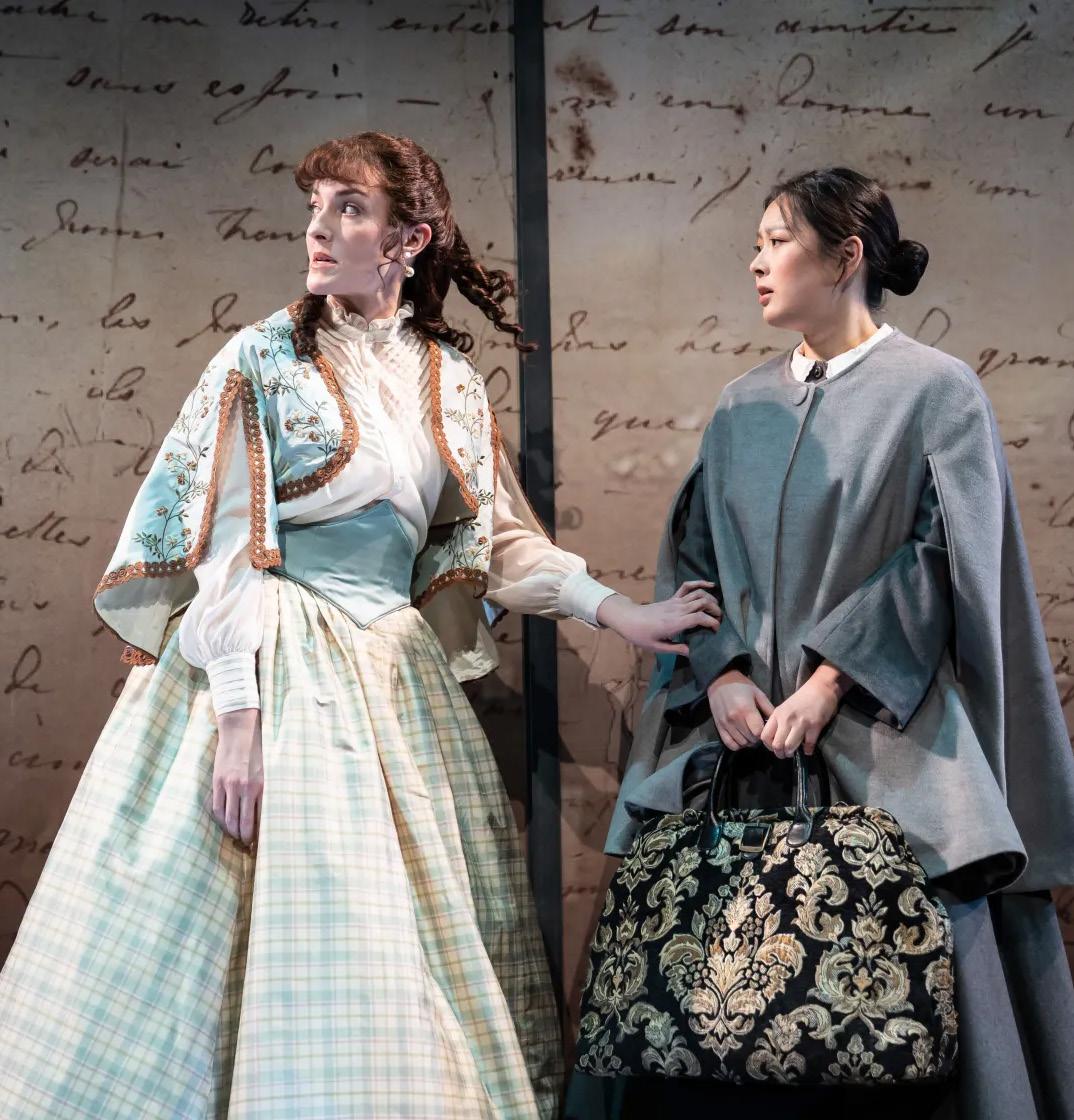
DePaul's Ad Society Students work to revive forgotten club
 By SaMuel MRoz Staff Writer
By SaMuel MRoz Staff Writer
Nested on the highest floor of DePaul’s Arts and Letters Hall, a pack of students flock to room 415 to judge their favorite ads in this year’s Super Bowl.
For them, the tales of love, laughter and a mass marketed appeal that can last anywhere between 30 to 60 seconds at a time is the real crowd pleaser.
As one member sketches a 16 slotted bracket onto an empty whiteboard, another cues up Forever — a commercial from the pet food company The Farmer’s Dog. Suddenly, the room goes quiet and everyone points their eyes toward the screen.
Art is in motion and they all know how to respect it.
This group — The Ad Society — brings together students who share a passion for great advertising and communication solutions.
Having been placed on a hiatus for nearly two years by the Covid-19 pandemic, the society now seeks to reclaim its standing as a beacon for DePaul’s creative student body.
While other groups on campus have had decades worth of reputation to rely on — whether that be connections with past alumni or an established following — The Ad Society is forced to operate on the sole strength of its 15 members.

A legacy lost in the wake of a pandemic, few remember what the group resembled in years past.
Those that do emphasized Chicago’s dense media landscape and the freedom it offers to the next generation of marketing professionals.
Former professor and faculty advisor to The Ad Society from 2011 up to the start
of the pandemic, Ken Krimstein views the DePaul climate as an ideal pairing between youthful creatives and the types of people they aspire to become.
“You have a perfect storm,” Krimstein said. “You have professionals that want to help students and students that want to learn from professionals.”
To establish new connections amongst the student body, The Ad Society has organized agency visits, marketing critiques and collaborations with fellow DePaul clubs such as the Public Relations Student Society of America (PRSSA.) Despite a disconnect in followers of the group from past to present, the end goal has yet to change.
“We redefined the mission of The Ad Society into two things,” Krimstein said. “One was a way for people who aren’t into public relations or advertising to learn about the
field. The other thing is that we wanted to be the student industry face of the ad program.”
Offered a book contract soon after the emergence of Covid-19 in 2020, Krimstein moved on from his role as an educator, passing the reins of advisor off to fellow advertising expert and professor at DePaul, Marshall Goodman.
Hoping to revamp the society, Goodman reached out to the students in his classroom to start the rebuilding process.
Over time, more minds took interest and the group started to expand.
Junior and President of the Ad Society Lauren Rickenbrode joined at the beginning of fall quarter and has since managed the growth of an organization building from the base up.
Finding a middle ground between an older student demographic and the need to
add new faces to the program seems to be the biggest struggle.
“No one wants it to be just another class,” Rickenbrode said. “I definitely am trying to balance it where I can, having stuff for underclassmen who are just getting into advertising or want to learn more about the industry but also gearing it towards upperclassmen who are looking for internships and want to apply for jobs.”
Current upperclassmen who were voided the opportunity to grow their portfolios due to the pandemic now look towards the society as a lifeline. To them, these agency visits are not just networking opportunities but potential jobs following graduation.
Junior Mary Peterson, advertising student and member of the society, offered her perspective of the agency model and how these visitations have further influenced her desire to pursue a career in the field.
“I think the great thing about agencies is that it's a team effort,” Peterson said. “In advertising, you have your accounts team that does the research, you have your creative team, you have the people working on the script, you have a production team, and then the people working on the art. Even if you get burnt out, you still have someone to bounce off of.”
Welcoming all majors and grade levels, meetings are typically held every Thursday at 6 p.m. in the Arts and Letter Hall.
Students can also check out weekly events, a reserved table at the spring quarter involvement fair and “The Clean Getaway Podcast” to see what steps The Ad Society is taking to grow its culture.
“With creative people, the reason you have them is for their individuality,” Krimstein said. “That’s why this is the place.”

St.Vincent’s
D e JAMZ
“Spinning freSh beatS Since 1581”

 By Jonah weBeR
Editor
By Jonah weBeR
Editor
I have always enjoyed some good cowboy and Western-esque media. And for the past few months, there’s been somewhat of a Western revisionist movement happening, especially on TikTok. Some may say we are being oversaturated with cowboy media, but they can hightail it off my goddamn ranch.
“Eyes Like The Sky” - King Gizzard & The Lizard Wizard

Starting off this heavy, modern and narrative beauty of a song by a band that I still don’t really understand. This song kicks off the album “Eyes Like The Sky,” and it’s a crazy combustion of Western instrumentals and heavy guitar riffs, narrated by the keyboardist's father. The album is one long story that follows cowboys, Native Americans and the state of America post Civil War. It’s fantastic.
“(Ghost) Riders In The Sky” - The Ventures

There are many versions of this song, but in my opinion this version gets a Lone Gold Star. Whenever I listen to this song I can’t help but think about traversing through the Great Plains with my mount. The mix of light vocals, stringy guitars and whatever makes that clackity noise, is amazing. For us urban dwellers, it’s a great song for zooming down Lake Shore Drive.
“Big Iron” - Colter Wall
Colter Wall has quickly become one of my top artists in the past few months. His covers and originals are fantastic. On this particular album, “Western Swing & Waltzes and Other Punchy Songs,” his cover of “Big Iron,” goes very hard. It’s hard to top the original by Marty Robbins but he has a song down the list. Wall brings his own punchy take on this Texas

Crossword

classic, which feels less melodic than the original, but it’s okay because this one has so much groove.
“Cowpoke” - Colter Wall
I wanna throw this song in here as well. Whenever I listen to it, I’m taken back to rising with the sun and feeding the cattle. That is all.
“The Master’s Call” - Marty Robbins
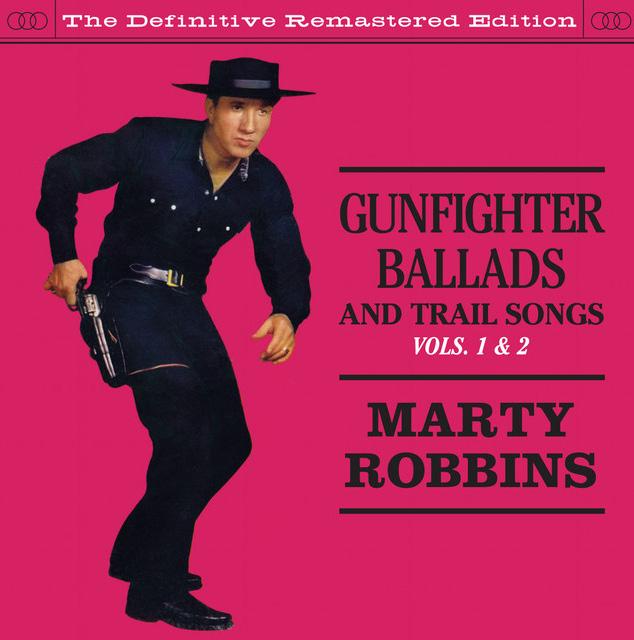
This song is so well written that sometimes when I listen to it, I almost believe in God. It’s hard to write a good song about Jesus, but this is how you do it. It follows the story of a bandit who left home for the life of crime, but God sends a message and saves the bandit from a terrible life. It doesn’t sound cool, but it’s beautiful, I promise.
“Rhinestone Cowboy” - Glen Cambell

Trust me when I say I’m about that Glen Cambell life. He is incapable of releasing a bad song. This song hits very
ACROSS
1) Inclination
6) Middle Eastern monarchy
10) Iranian currency
14) Some soft drinks
15) Tree trunk
16) Land o' the shamrock
17) How some lay it on?
20) Tear apart
21) Property recipient, in law
22) Satisfied one's hunger
23) "A likely story!"
24) Apogee's antithesis
28) Common volcanic rock
30) Six-stanza verse form
32) Is generous
35) Mighty high peak
36) Almost certifiable
40) Suffers from
41) Cough drop flavor
42) Like a glutton
45) Calculator of a sort
49) Leisurely walk
50) Blanched
52) Antiapartheid party, for short
53) Certain singer
56) Certainly not often
57) What a hint is
61) Like a tie score
62) Bookie's quote
63) Ration out
64) Lightbulb unit
65) Not messy at all
66) Dabbling ducks
DOWN
1) Post-natal care powder
2) Collection of miscellaneous pieces
3) Wise advicegiver
hard whether you’re wandering through Chicago, giving someone a tattoo, or chorin’. It is truly a song for the cowboys, cowgirls, and cowtheys, because it speaks on living in both a rural setting and an urban one. It’s a song about the journey, not the destination.
4) Obedient
5) Move like a squirrel
6) Country music's Tucker
7) Omit in pronunciation
8) Type of saxophone
9) Slugger's decisive win
10) Arctic transport
11) Vietnam's capital
12) Admits bluntly
13) Word before "got a clue"
21) Movie popcorn unit
22) More difficult to collect
25) Fingerboard feature
26) Like Tonto's masked friend
27) Teacher's helper
28) A good number
29) "Addams
Family" member
31) Make an impression, in a way
32) Albanian currency
33) Sound of a stick
breaking
34) Highest stage
35) Overcharging condition?
37) "Take_ down memory lane"
38) _ fly (RBI method)
39) Space cadets
43) It's just above a foot
44) Schmaltzy
45) Viper variety
46) Abstract painting style
47) Ill-fated Antoinette
48) Some corrosives
49) Jolly Roger flag depiction
50) Palindromic tool
52) Opposite of include
53) Spanish abode
54) Nike's "Just" conclusion?
55) Tolstoy's "_ Karenina"
56) Sneering look
Tori Meyer leading by example: Eyes set on winning Big East Tournment
ByGrowing up in Barrington, Illinois with two brothers, Tori Meyer established a competitive edge early on in life to always be the best and strive for greatness. Implementing a winning mentality led Meyer to not only be successful on the softball field, but in the classroom as well.
“I’m probably the most competitive player on the team,” Meyer said. “Growing up, I always had two brothers, so I competed with them, and I think it’s kind of just ingrained in my personality. I just love to win and just make the fans, my family and myself proud. Winning just means I’m working the hardest and that work is being shown to everybody.”
Meyer was a multi-sport athlete throughout high school and fell in love with softball and basketball at a young age. Ultimately, she decided softball was the path to take and committed to DePaul in September 2017.
“Tori [Meyer] was actually committed when I took over the program,” head coach Tracie Adix-Zins said. “She wasn’t strictly a softball player and had played other sports and was highly competitive in them. [That] is what stood out about Tori. I think when you’re bringing in recruits, you want people that are super competitive, especially in this world.”
The team knew the risk of investing in a multi-sport athlete, and a day after Meyer signed her letter of intent with DePaul, she tore her ACL playing basketball. Still, Meyer says DePaul was fully committed and helped her tremendously through her rehab process. There was never a discussion of pulling her scholarship.
Meyers breakout season came a year ago, during her junior year, when she hit .339 in 52 games, while also slugging five home runs. Meyer recorded 34 RBI’s to go with a .539 slugging percentage too. Her development and growth as a player have progressed significantly from when she first stepped on campus and coaches and team-
mates have noticed.
“I think she’s developed a lot, and I can see she’s very confident in herself,” senior first baseman Brooke Johnson said. “I think she knows what she can do and is confident in that, so I think she has a lot more confidence than she did her freshman year. I think she’s grown since then.”
Defense has always been Meyer’s strength, and so far this season, she has been flawless in the outfield, committing zero errors with two assists. Prior to this year, she has been a versatile utility player for the Blue Demons but has now solidified herself as the team’s leader in the outfield.
“This is my first year playing center field at DePaul, and that means the world to me,” Meyer said. “Center field is like the main person who takes priority over pretty much all balls that we get out there and have to make sure everybody’s in the right position or not, so it means the world to me. I’m hap-
py to be in this position right now.”
For teammates and coaches, leadership is the first word that comes to mind when Meyer’s name is brought up. Meyer’s ability to lead a group of people has been seen on and off the DePaul softball field. When she is not tracking down fly balls and helping DePaul find a way into the win column, Meyer’s is coaching the next generation of talent.
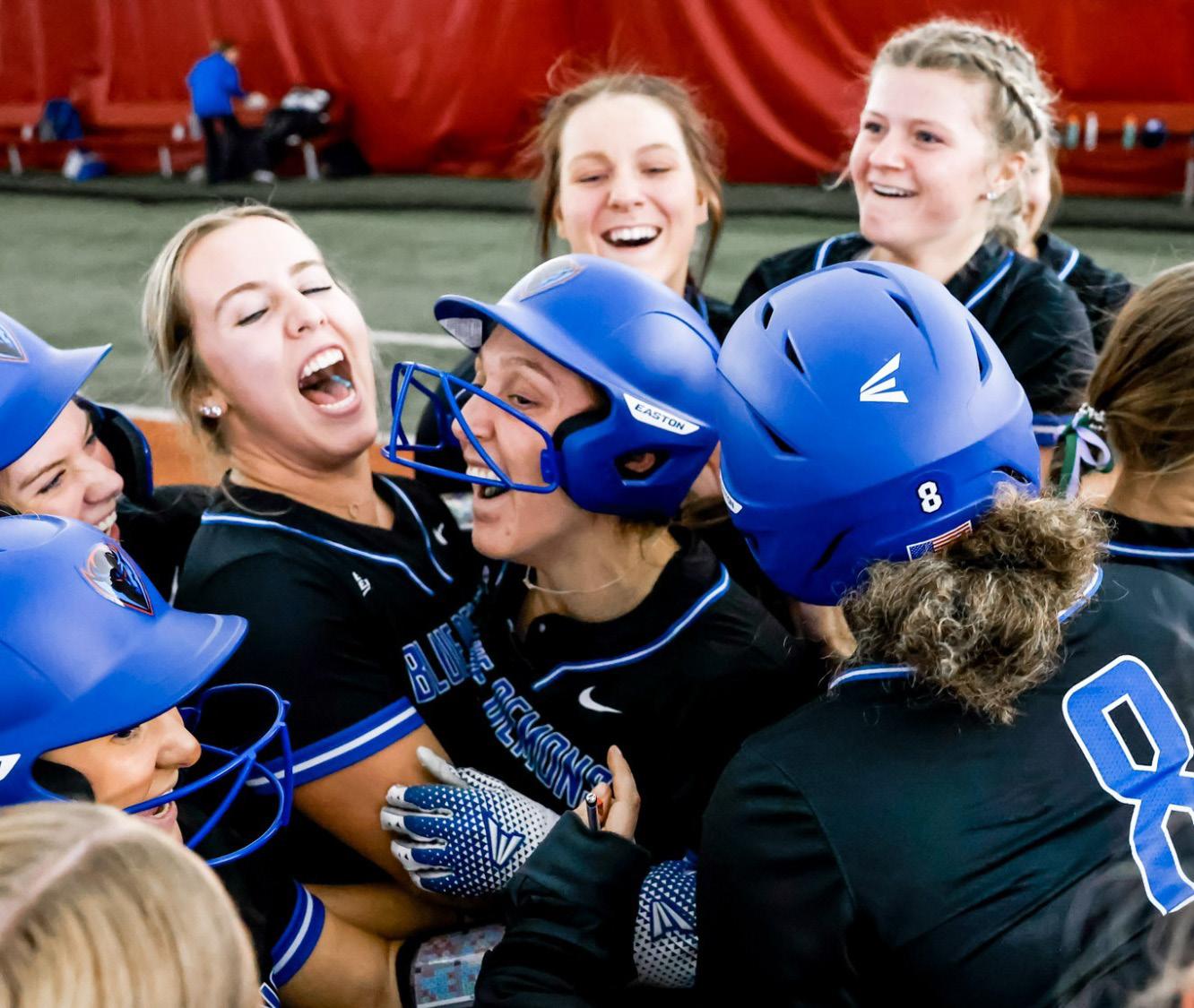
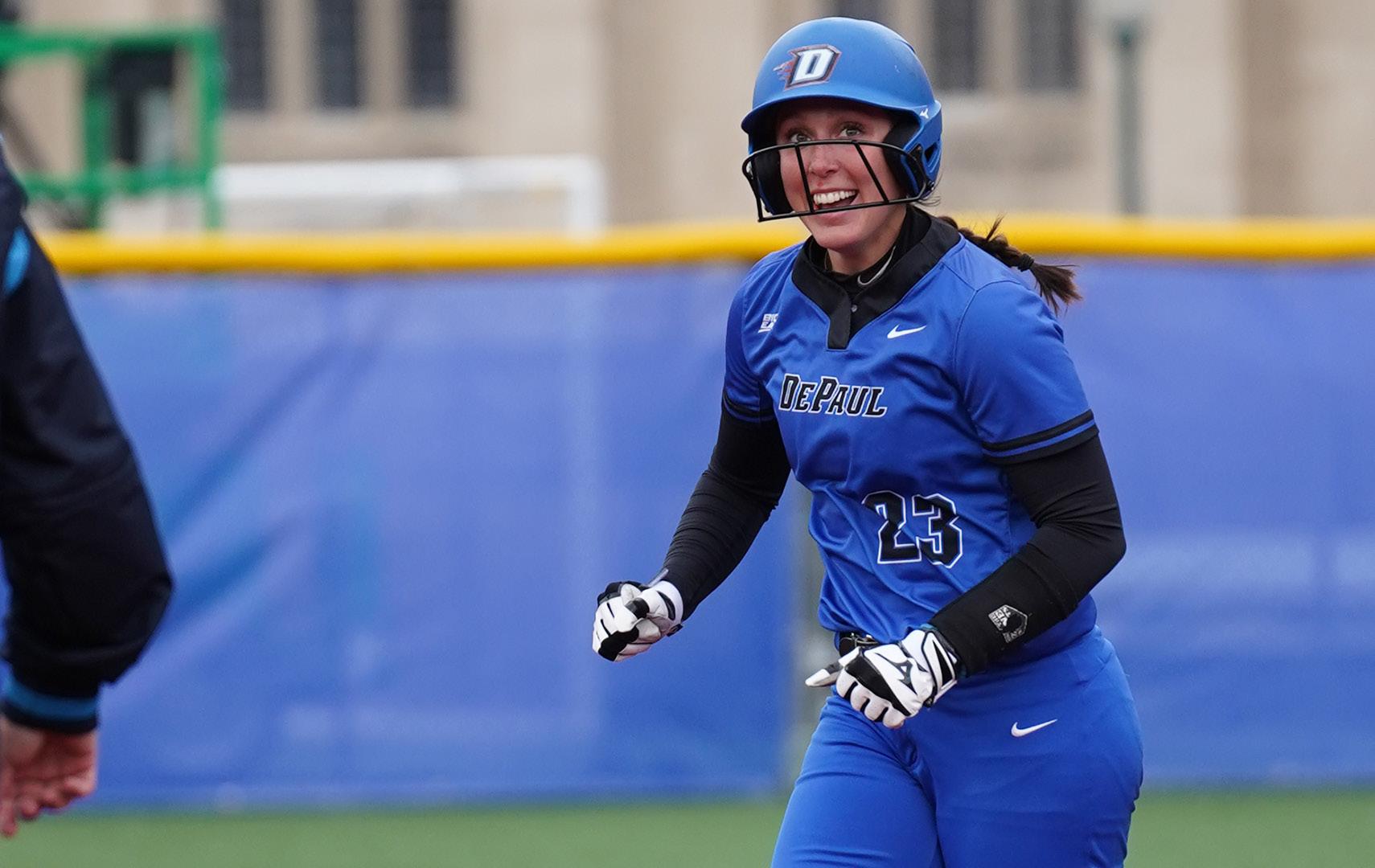
Coaching has always been a passion for Meyer. So when the pandemic hit and Illinois softball was put on hold due to restrictions, she believed it was the time to pursue it. She decided to coach in Wisconsin and ease her way into it, only coaching once a week.
“I absolutely love coaching softball,” Meyer said. “Right now, I’m coaching my 14U team in Barrington, Illinois, and I honestly love it because it kind of makes me a better player, if that makes sense. I’m seeing both sides of the coin as a player and coach
and kind of use it to my advantage. I think I’m just more well-rounded now and can teach what I know now on a day-to-day [basis] to reinforce certain skills and drills and mentalities.”
Meyer’s hard work and dedication has not gone unnoticed, and the team under Adix-Zins has implemented a leadership council instead of the traditional captains.
“She’s [Meyer] going to take over a leadership role,” Adix-Zins said. “This is the first year we’ve had it, and I actually have more of a leadership council because sometimes captains can just get a little dicey. She’s a part of the council, and we’re trying to impact our players on and off the field and help them understand how to lead in this day and age.”
Meyer received votes from her teammates along with Johnson to be one of the team’s leaders for the upcoming season. According to players and coaches, Meyer is one of the team’s biggest supporters, cheering on the team and staying positive when times are tough, instilling confidence that she will thrive in her new role.
“It kind of solidified that people are counting on me to step up and produce for our team and help us win,” Meyer said. “It meant a lot to me and I was very happy and excited to be in that position because I had before and I think it really put pressure on me. It kind of gave me that extra boost of confidence.”
Meyer isn’t necessarily worried about what the future holds and her main focus right now is on DePaul softball, but if she cannot play professionally, she has interest in being a school counselor. Meyer is majoring in psychology and plans to use her fifth year of eligibility to also play softball and pursue a master’s degree in school counseling.
“I’m kind of focusing on taking the team to the Big East Tournament and winning,” Meyer said. “I’ve definitely thought about playing pro at the next level because I do love it so much and it’s become a huge part of my life.”
DePaul’s Smash Bros. team triumphs over Hawaii in tournament
By Violet Smale Contributing WriterBesides the pressure of competition, the online nature of esports presents unique challenges when it comes to competing with opponents 4,000 plus miles away.
“We were kind of nervous going into [the match], though, because there can be connection issues, but it went really well,” said sophomore Allison Dicks, the team’s tournament organizer after competing against the University of Hawaii on Tuesday, Feb. 28.
Despite the potential for problems, DePaul’s Super Smash Bros. team was victorious 18-8 against their opponents.
“Hawaii is one of the teams that we have a rivalry with every single year in this league,” said senior Dylan Turbow, president of DePaul’s Smash club. “We had to prepare hard for this one, and we came out on top.”
The team gathers at the competitive team center inside the Lincoln Park Student Center, each Tuesday to compete.
“We take an already-popular video game, and we turn it into a competitive scene,” Dicks said. “So, we have a team of about eight people who compete weekly with other collegiate schools. We play against one another to see who comes out on top.”
The team works to accumulate points leading up to their championship, which will take place online in April.
Each weekly tournament entails plenty of strategizing and practice for the Smash team, according to Samuel Steiner, the varsity captain of Smash Ultimate at DePaul.
“For our collegiate matches, we pretty much always analyze the rosters and character choice of the team we’ll be playing, which gives us a pretty huge advantage when we’re deciding who to send in [to compete] the day of,” Steiner said.
Dicks finds the outside preparation for Tuesday’s matches to be a great way to connect with the team.
“We get together quite a lot outside of school just to practice and work on new things,” she said. “It’s just a lot of helping each other and saying, ‘oh, I think you should try this’ or, ‘maybe don’t do that anymore.’ It’s really a team-based sport.”
Dicks described the team as a welcoming group, a “big friend group that happens to compete.”
“A lot of people think [esports] are really closed-off and that you have to have a super competitive mindset … but, the Smash team is super chill,” Dicks said. “We’re not going to judge you for not knowing how to play the game.”
Turbow echoed this sentiment, emphasizing the uplifting team dynamic.
“We’re a fun-loving group of people,” Turbow said. “We are very welcoming. We accept everyone, honestly, and we enjoy everyone.”
Turbow hopes to end the stigma surrounding esports.
“There’s definitely a stigma when it comes to esports,” he said. “Just the overall idea that esports people are nerds … if
people were to give us a chance, we could prove that we’re a pretty cool group of people.”
In addition to a great team dynamic, the esports team also holds several state, conference, and national titles.

“When it comes to the esports teams at DePaul, we are a force to be reckoned with,” Turbow said. “All of our teams have won not just state titles, but national titles.”
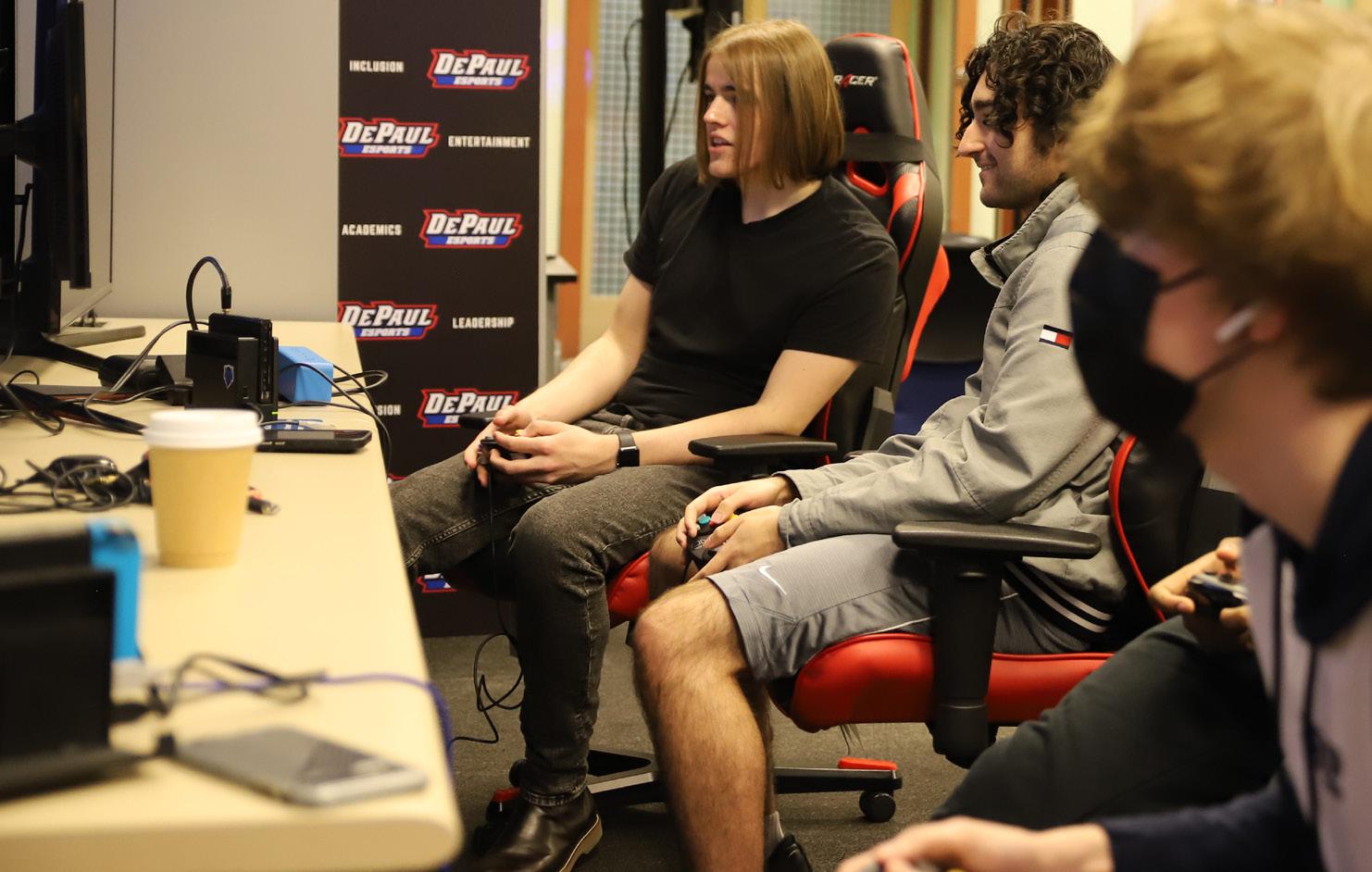
DePaul’s esports teams have had a successful year, with its League of Legends team capturing a Big East Title in the fall, as well as the whole team bringing home a national title in Spring 2022.
National titles do not happen overnight, Steiner wants the DePaul community to understand.
“If I could teach everyone one thing about esports, it’s that it’s just as much of a rigorous, competitive experience as any other sport,” Steiner said. “Thousands of hours of practice go into us competing, and it takes a strong mentality to take losses well and learn from them.”
Steiner encourages anyone interested in learning about esports or the Smash team in particular to look into VGBootCamp on YouTube.
“They upload matches from all sorts of tournaments (local, regional, major), so if you want to see what competitive Smash is like at every level, that’s a great place to start,” Steiner said.
Esports also holds plenty of events open to the public, such as tournaments, matches, and gaming marathons, all of which are detailed on DePaul’s esports Instagram and Twitter pages (@DePaulEsports).
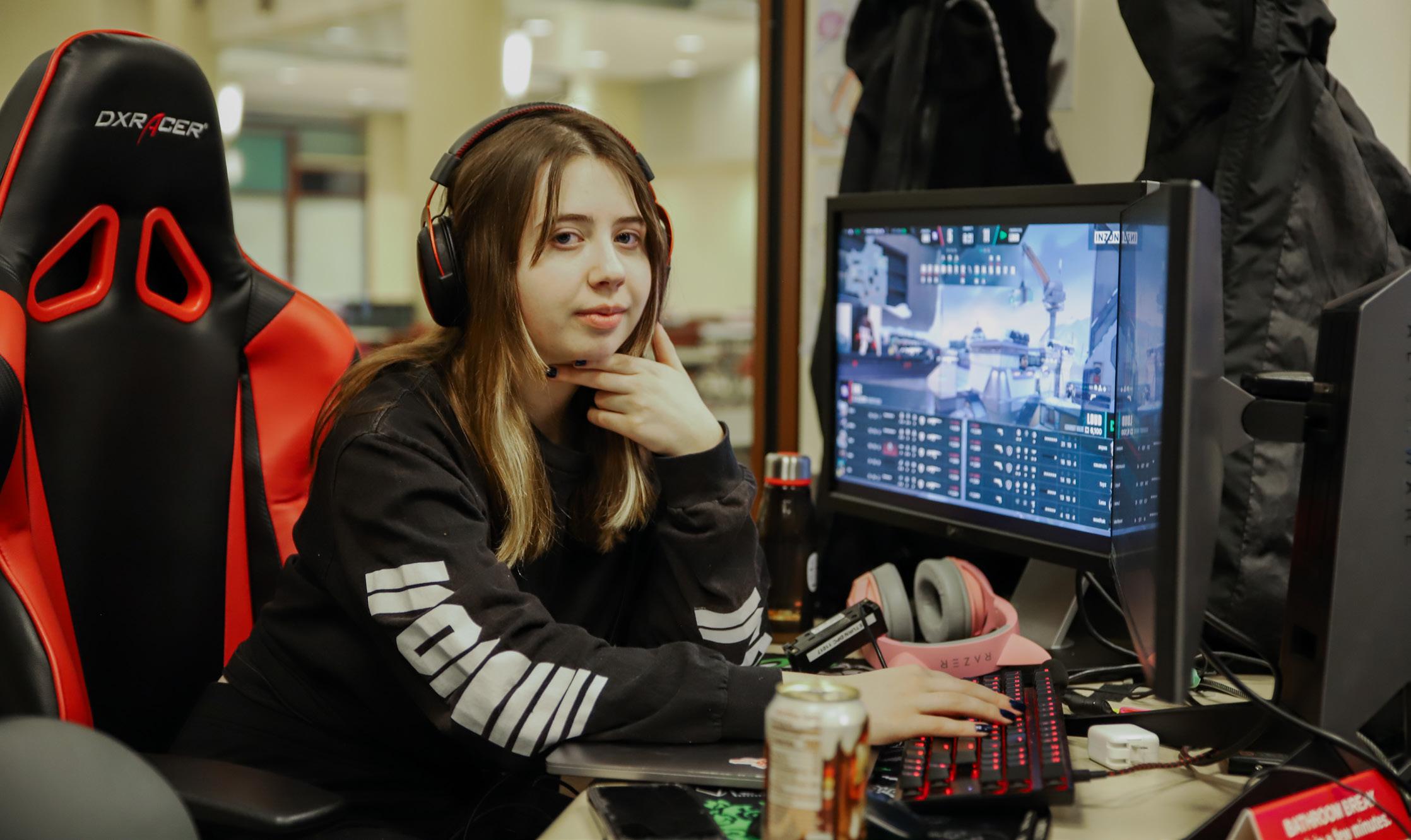
“When it comes to the esports teams at DePaul, we are a force to be reckoned with.
All of our teams have won not just state titles, but national titles
Dylan Turbow President of DePaul’s Smash Club
COMMENTARY
Blue Dozen
By Tom Gorski Sports EditorDePaul (9-22, 3-17) is set to face off against Seton Hall (17-14, 10-10) in its opening round matchup for the Big East tournament in Madison Square Garden on Wednesday, March 4 at 4:30 p.m. The Blue Demons are desperately looking to snap a 12-game losing streak and will have the odds stacked against them, as not many expect to see this year’s team go on a deep tournament run.
The bar is low, but the team’s lack of success over the last two decades unfortunately has not helped its case. Seton Hall is no juggernaut by any means, so if DePaul wants to turn its 2022-23 season around, the time is now.
DePaul drops 12th straight, bids farewell to seniors in finale
By Max RaymanIt was a somber senior night for the DePaul men’s basketball team Saturday as they fell short to Creighton, 84-70. The Blue Demons’ 12-straight losses mark its longest losing streak since the team lost 18-straight during the 2008-09 season.

The Blue Demons finished the season 9-22 overall and 3-17 in conference, only above Georgetown in the Big East standings.
Through the first ten minutes of the first half at Wintrust Arena, both offenses were sluggish, with DePaul shooting 4-17 and Creighton shooting 6-19 from the field. The Bluejays were able to find its stroke first, finishing the first half shooting 15-33.
Sophomore guard Trey Alexander, junior center Ryan Kalkbrenner, freshman center Fredrick King and sophomore guard Ryan Nembhard combined for 34 of its 39 first-half points.
The Blue Demons’ defense produced five first-half blocks but kept giving Creighton too many opportunities, leading to 12 second-chance points. Yet, it was DePaul’s own shooting woes that doomed the Demons in the first half. They shot an underwhelming 27% from the field.
“We missed some really good looks in the first half,” head coach Tony Stubblefield said. “We got some looks for our guys that we wanted, but we just didn’t knock them down.”
DePaul entered halftime down 3924 and trailed by as much as 18 before mounting any comeback. Down 43-26 and needing a spark, junior guard Caleb Murphy came off the bench and delivered.
Murphy scored nine of his 13 points as the Blue Demons went on a 28-13 second-half run, cutting the deficit to five and forcing Creighton to call a timeout.
“I was just trying to be aggressive,” Murphy said. “The coaching staff told me to play my game, play with confidence and be aggressive. I had that in the back of my head during the game.”
DePaul’s second-half comeback should not have come as a surprise.
“We watched them against Marquette in the second half on how explosive they can be offensively,” Creighton head coach Greg McDermott said. “ We didn’t have

an answer, but fortunately, we were scoring enough to keep the lead. Then we came out of the timeout and executed a few things and tightened up our defense for the rest of the way.”
After the timeout with 10:44 remaining in the game, Creighton hit back-toback threes, shutting the door on DePaul’s comeback attempt. From then on, the Bluejays were able to close out the game comfortably.
For Creighton, it was a solid performance to cap off a roller coaster of a season. The Bluejays started the season 6-0 and were ranked No. 10 in the nation before losing six-straight. They were able to bounce-back, winning 11 of its next 13, before losing three of the last five.
The Blue Demonsw shot 55% in the second half and finished the game shooting 40%. Senior Javan Johnson led the way for DePaul, finishing with 18 points and five asswists.
It was not all doom and gloom for DePaul, as seven Blue Demons were honored beforehand on senior night: Philmon Gebrewhit, Brendan Favre, Umoja Gibson, Javan Johnson, Nick Ongenda, Eral Penn and Yor Anei. Stubblefield addressed the seniors beforehand and emphasized that they needed to just play their game and avoid getting caught up in the emotions.
“It was definitely a sad experience as I stepped onto the court for the last time,” Ongenda said. “I built plenty of memories with my teammates, but I was also very happy to be a four-year DePaul player. But once the game started, I locked in.”
Next up is the Big East Conference Tournament, where No. 7 seed Seton Hall awaits them. Despite riding a 12-game losing streak, no one on the Blue Demons is deterred.
“These guys are really resilient and bounce back,” Stubblefield said. “They keep a positive attitude, and they know we have a chance. We’ve won games against good teams in this conference, against Villanova and Xavier. We’ve lost some games that we should have won.
We’re back healthy and our players realize with a healthy team, they can beat anyone in the conference.”
DePaul lost both of its regular season games against Seton Hall, with both coming down to the wire.
“We’ve got to play together for 40 minutes and score the basketball,” Stubblefield said. “Seton Hall is a very good team defensively. They have good athletes and guys that can guard multiple positions.”
Even though the fan base may have forgotten what winning feels like, the Blue Demons did find a way to miraculously upset No. 8 Xavier on Jan. 18 by a final score of 73-72. Since the emotional victory, the team has found a way to explicitly lose 12 straight games, marking its longest losing streak since the 2008-2009 season, which was 18 straight losses.
Finding a consistent path to victory this season has been a challenge to say the least, but head coach Tony Stubblefield remains optimistic as they prepare for Seton Hall on Wednesday.
“These guys are really resilient and bounce back,” Stubblefield said. “They keep a positive attitude, and they know we have a chance. We’ve won games against good teams in this conference against Villanova and Xavier. We’ve lost some games that we should have won. We’re back healthy and our players realize with a healthy team, they can beat anyone in the conference.”
For the second consecutive season, the fan base finally felt a sense of excitement, but the Blue Demons once again showed inability to sustain success at a high level. Stubblefield has faced a lot of adversity this season, but when a team suffers back-to-back second half season collapses, it unfortunetly falls on the head coach.
Stubblefield started off his inaugural season strong with a 10-1 record, but ended the season with a 15-16 record highlighted by losing nine out of 10 games at one point. The team once again failed to meet expectations a year later, but this time around found itself trying to overcome a 12-game losing streak to end the season, just as the Big East Tournament approaches.
DePaul has much more talent than the product that has been shown on the court over the last two months, but what cannot be overshadowed is how disconnected the team can come across to the media, fan base and opposing opponents. How can the team believe it can advance in a tournament as strong as the Big East if they cannot get out of their own way?
Graduate guard Umoja Gibson and forward Javan Johnson have been the heart and soul of DePaul basketball this season, but at what point someone needs to step up and make a play to take the pressure off them. Both Gibson and Johnson combine for a total of 25.89 points per game during losses.
The pressure is on for Stubblefield to find a way to get the Blue Demons into the win column as losing double-digit games along with a first round exit in the tournament could lead to a long list of questions that need to be answered this offseason. Stubblefield’s job is believed to be safe, but when administration does not see any sign of growth, it is difficult to determine what decisions could be looming ahead.
Losing streak has things looking bleak for Big East Tourney
By Preston Zbroszczyk Asst. Sports Editor
UNCASVILLE, Conn -- With 2:51 left in the game, sophomore Aneesah Morrow backed down her defender in the low post and shot a contested turnaround jumper over two Villanova defenders. It was nothing but net, and Mohegan Sun Arena erupted as DePaul took a 70-64 lead in the second-round Big East Tournament matchup.
Morrow’s shot proved to be DePaul’s final points of the game. Villanova followed with a 7-0 run as Wildcats sophomore Lucy Olsen iced the game at the free-throw line with seven-tenths of a second left after making the first and intentionally missing the second, for a final score of 71-70.

“Yeah, my teammates had my back,” Olsen said. “They kept telling me, ‘you’re good, you do this in practice everyday,’ it was my teammates putting confidence in me.”
This was the third time this season Villanova and DePaul met this season. Back on Jan. 11, DePaul fell by seven, 71-64, and the final regular season meeting on Feb. 21, saw the Demon’s lose 67-64.
Like those two previous meetings, this one was back and forth as teams exchanged runs.
There were 10 lead changes throughout the game. The Wildcats won the first two quarters, outscoring DePaul, while the Blue Demons won the final two quarters, but in the end shooting one for seven from the charity stripe, caused a huge six-point swing.
“I’m a coach who does not believe in talking about free throws,” Bruno said. “We work on free throws, we prepare with free throws. I feel we have a good system that puts pressure on players, every single player.”
Senior Anaya Peoples had 10 points in the first half as she controlled the flow of the offense handling the ball. Peoples had three personal fouls by the half to go along with Morrow’s two, limiting Bruno’s second-half game plan.
Looking for someone to step up offensively, junior Kendall Holmes did just that. The team’s best three-point shooter sought every opportunity throughout the game and gave DePaul impactful baskets when it needed them.
Holmes went five for nine from three and played all 40 minutes of Saturday night’s game.
“I believe shooters got to shoot,” Bruno said. “They have to be ready to shoot. Kendall was due to break out, and she started to break out [in Friday’s game], and that’s the Kendall we believe in.”
Ultimately, DePaul, who led most of the fourth quarter, let this game slip away. After the game, Bruno said that although his team got defensive stops and outrebounded Villanova, it came up short when things mattered most.
First round vs. Providence
On Friday, DePaul fared much better, closing out Providence with an excellent performance by Morrow in the team’s firstround matchup.
Making its 18th Big East Tournament appearance, DePaul coach Bruno had its work cut out for them entering Friday’s game, but a strong showing led the team to the 67-54 win over Providence.
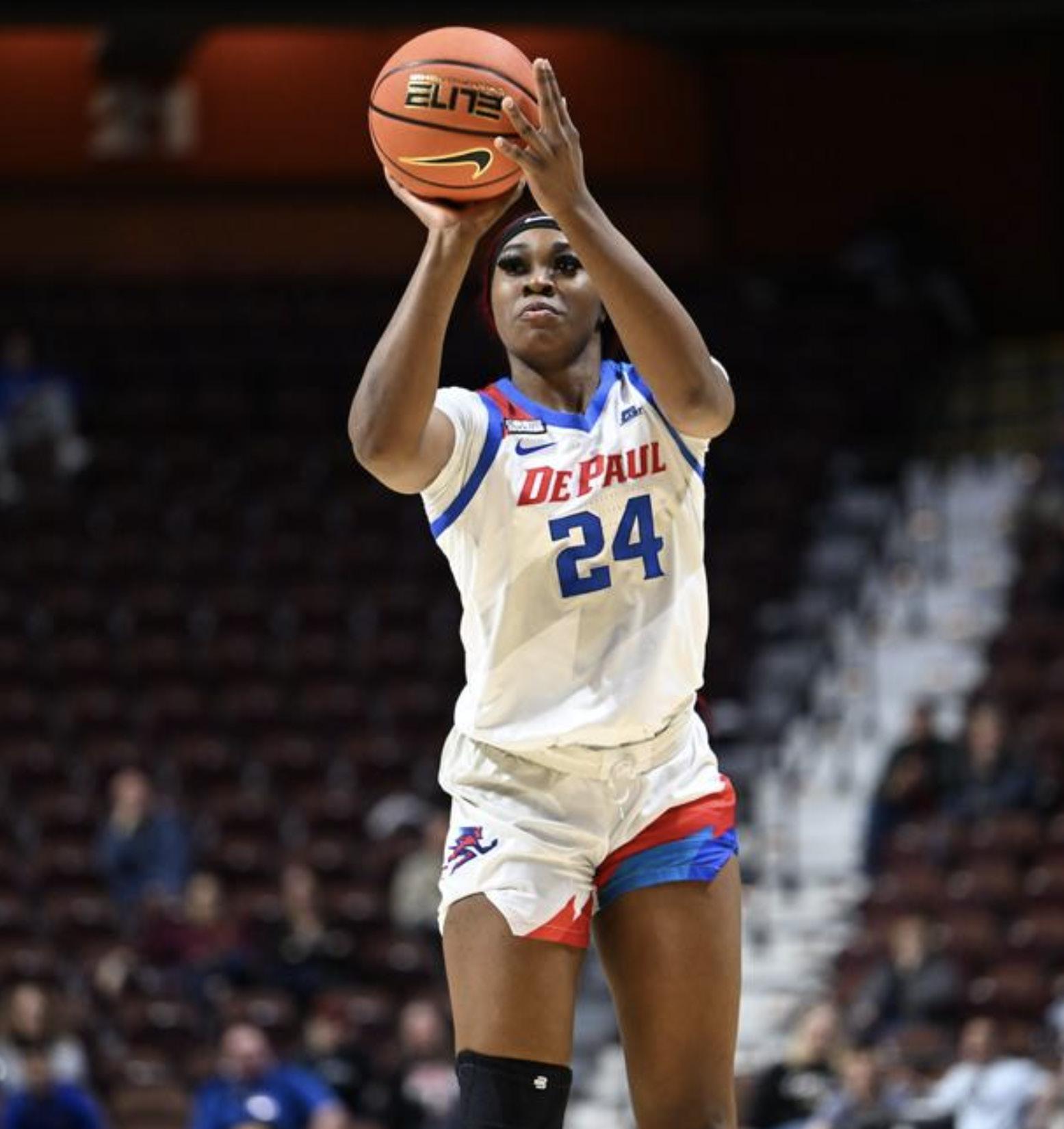
Morrow had the Blue Demons in control from the start. She finished the first half with 24 points — just two points shy of breaking Syracuse alum Beth Records’ record of 26 first half points in the Big East Tournament.
Sports
AP PHOTO/JESSICA HILL“Morrow is a phenomenal scorer,” said Providence head coach Jim Crowley.
Prior to the start of the Big East Tournament, Morrow was unanimously named to the Big East All-First Team. This is her second selection in back-to-back seasons. Junior Darrione Rogers was also awarded Big East All-Second Team.
Since joining the Big East in the 2005-06 season, the Blue Demons have only held the seven seed twice, in 2010 and 2013.
Having defeated the Lady Friars twice in the regular season, DePaul knew they had the experience and gameplan to defeat Providence.
Defense played a huge role in making sure Providence never got going. After going up 14-13, the Friars would not see the lead for the remainder of the 37 minutes of play.
DePaul forced 10 first half turnovers and held Providence to a sub-30% shooting performance.
Morrow outscored the entire Friars team in the first half 24-22 as they took a 41-22 lead, capping it off with a 16-2 scoring run.
“It started before the game,” Morrow said. “I was shooting very well in warmups and I knew that I was going to shoot great today. I was in the flow, coach Bruno never really limited me to anything on the court.”
In the midst of Morrow’s offensive burst, she drained a three and turnaround midrange jumper on back-to-back possessions, smiling on her way back to play defense, only for Crowley to call a timeout in frustration.
The first-half glory did not last. The Blue Demons opened the third on a scoring drought and played a bit out of sorts, committing 10 second half turnovers.
Pacing the baseline, Bruno yelled at his player over and over again, making an emphasis on making the simple pass and to slow things down.
“There were some possessions of dysfunction offensively,” Bruno said. “But then there were some really good possessions. So I just think that it’s a work in progress, and at this point in time of the year, you really just have to focus on what we have to do to beat one team.”
Rogers provided the offensive spark that went missing with Morrow. Her two 25-foot threes kept the Blue Demons ahead and shut down the Providence scoring runs.
Peoples, who assured herself defensively like she has all season, added 12 points and seven rebounds.
Through an up-and-down season filled with unknowns and injuries, DePaul might have finished better than its 16-17 overall record if it had been able to build chemistry early on.
Looking forward to next season, means yet another year Morrow returns to continue to rack up accolades and move closer to the
all time leader in scoring.
Morrow, 20, is already regarded around the college basketball community as possibly the best player in the country.
For the second straight season, she was named a finalist in the ballot for the John R. Wooden award. Which is given to the Nation’s best player in all of college basketball. She finished the season averaging 25 points per game, 12.2 rebounds and shot 42% from the field.
Bruno will have more than half his roster from this season returning, including one of the nations top point guards from Joliet West High School, Lisa Thompson.
